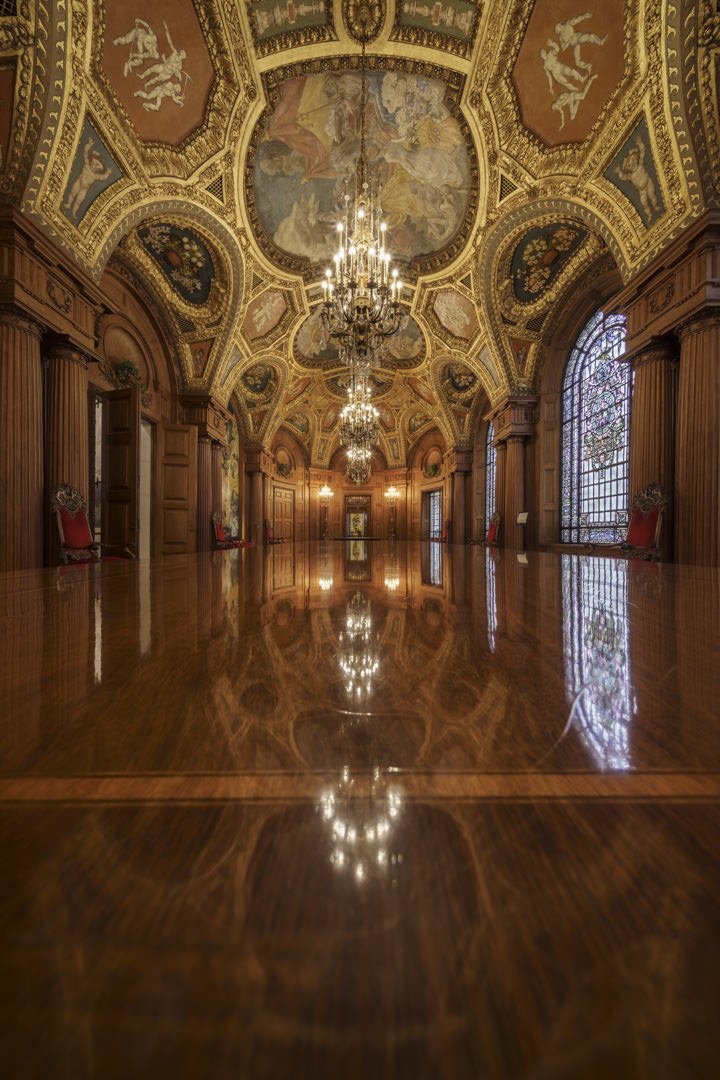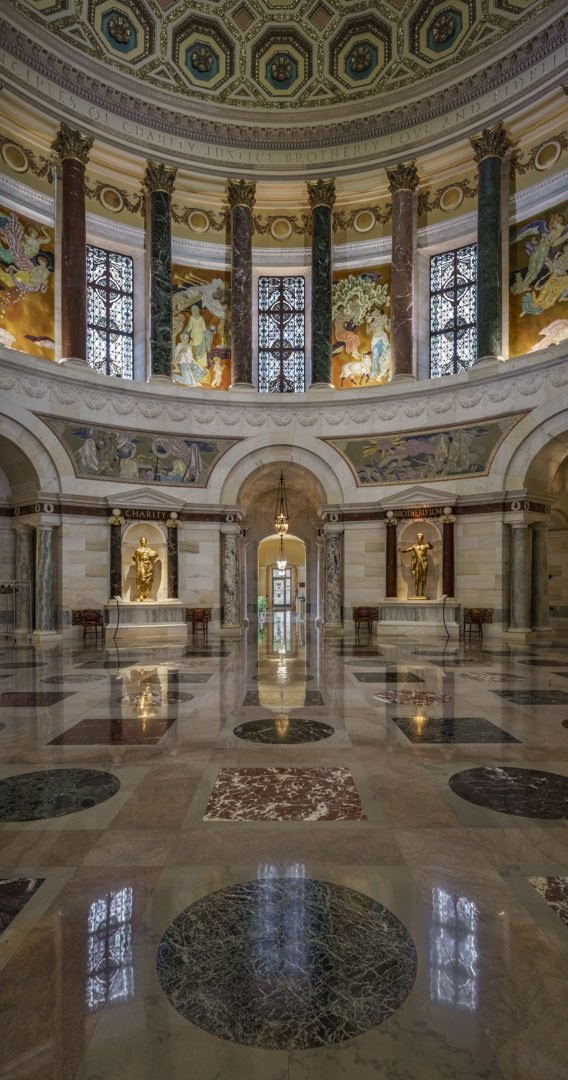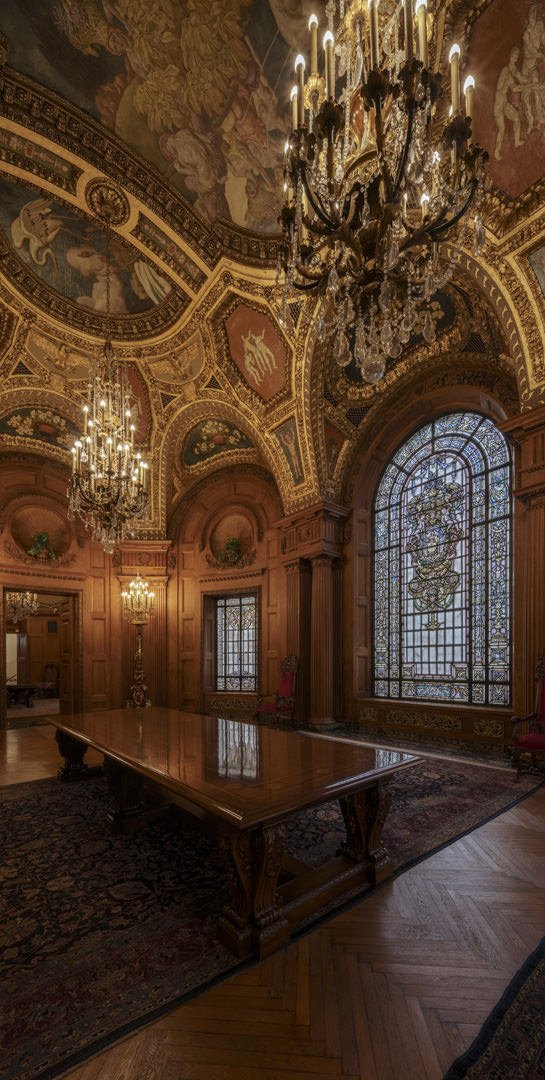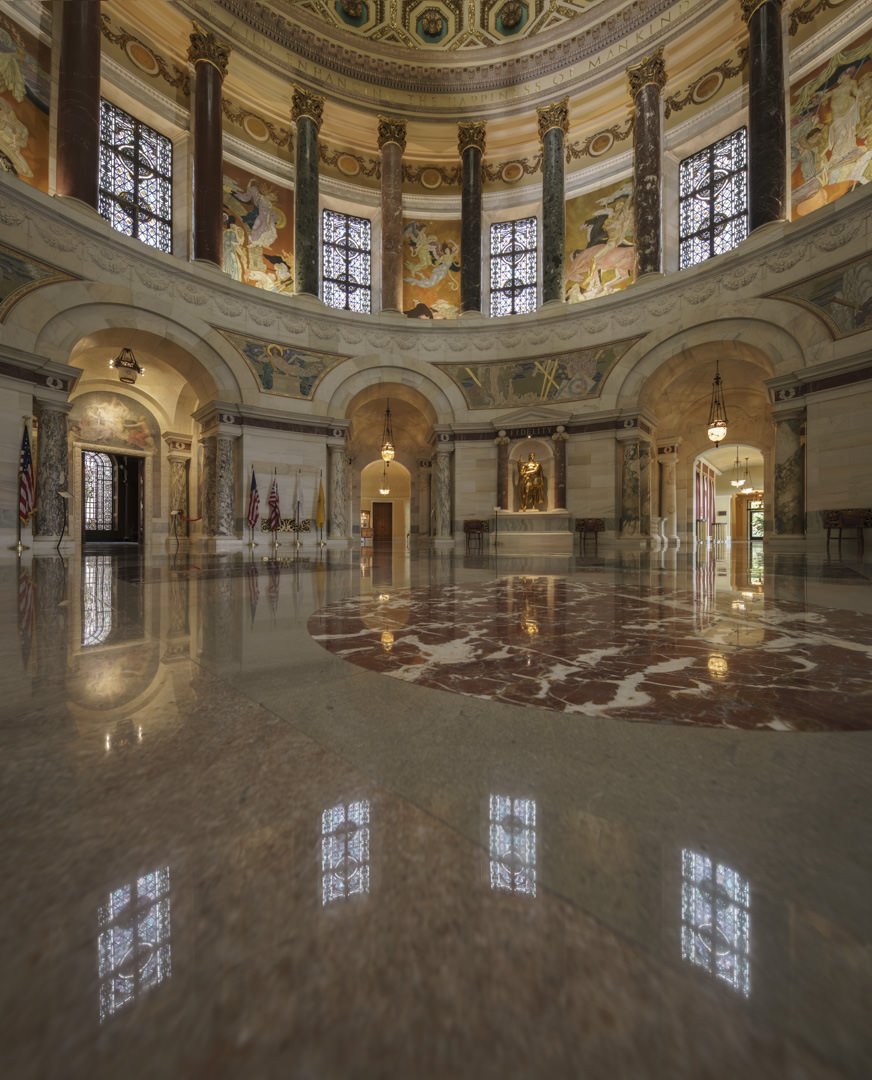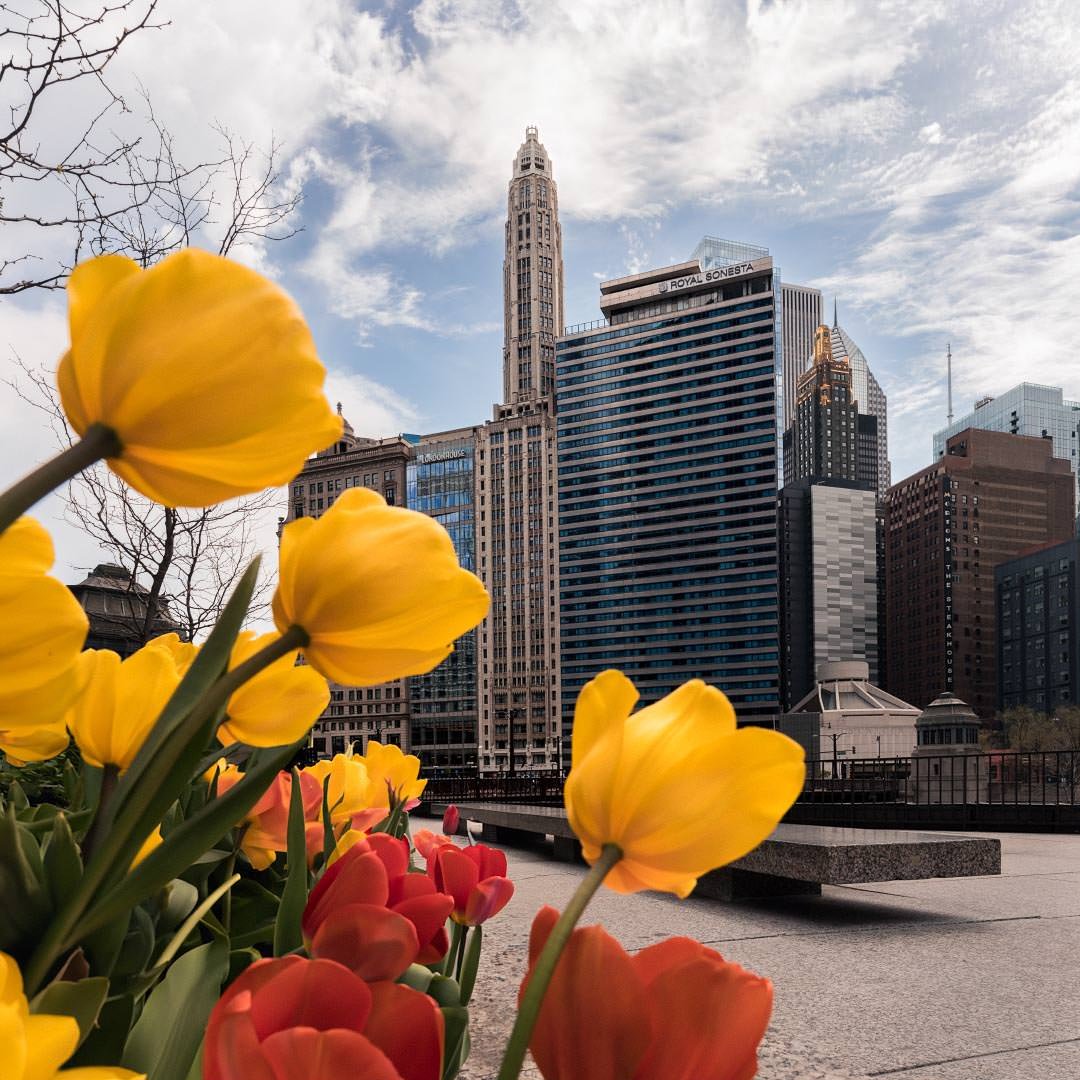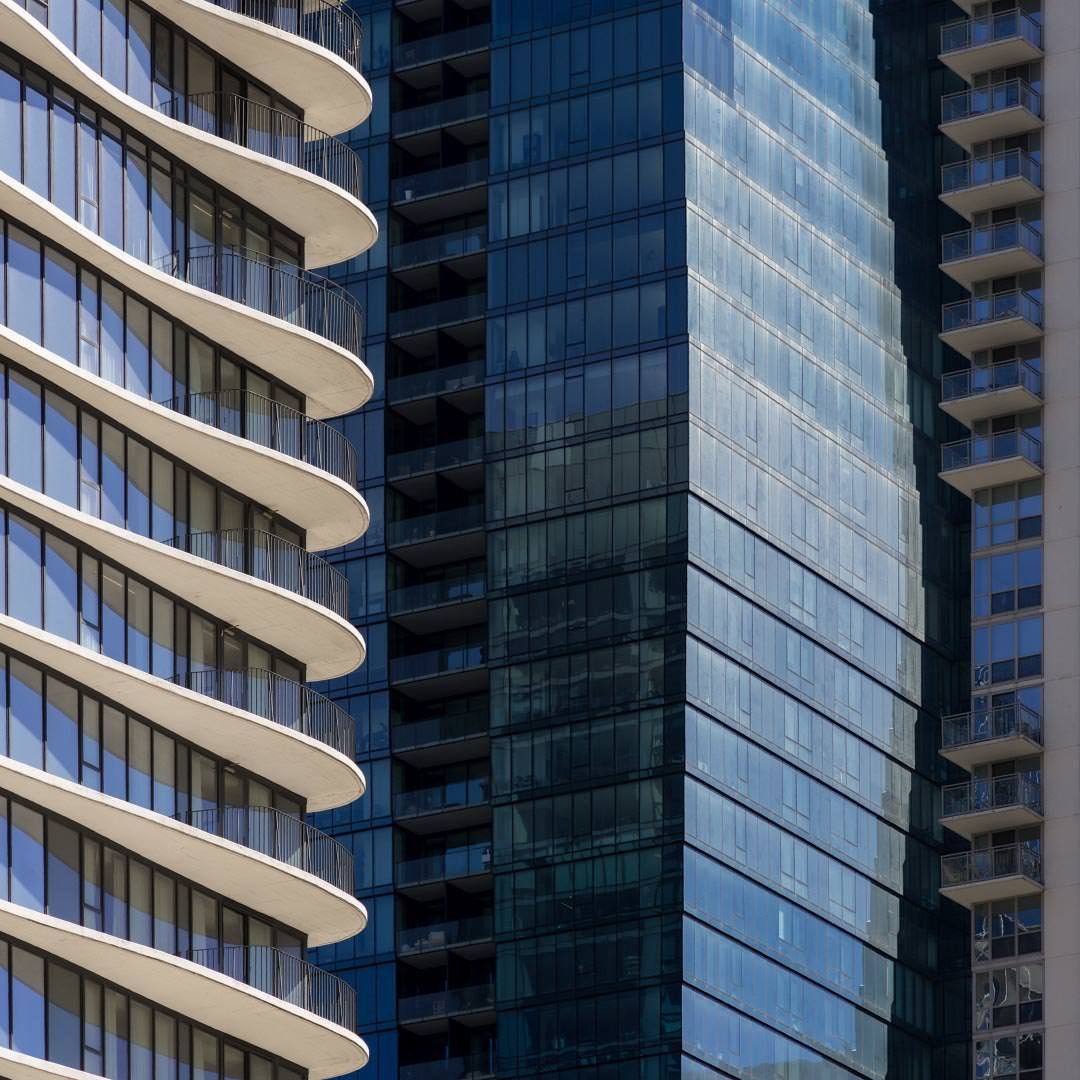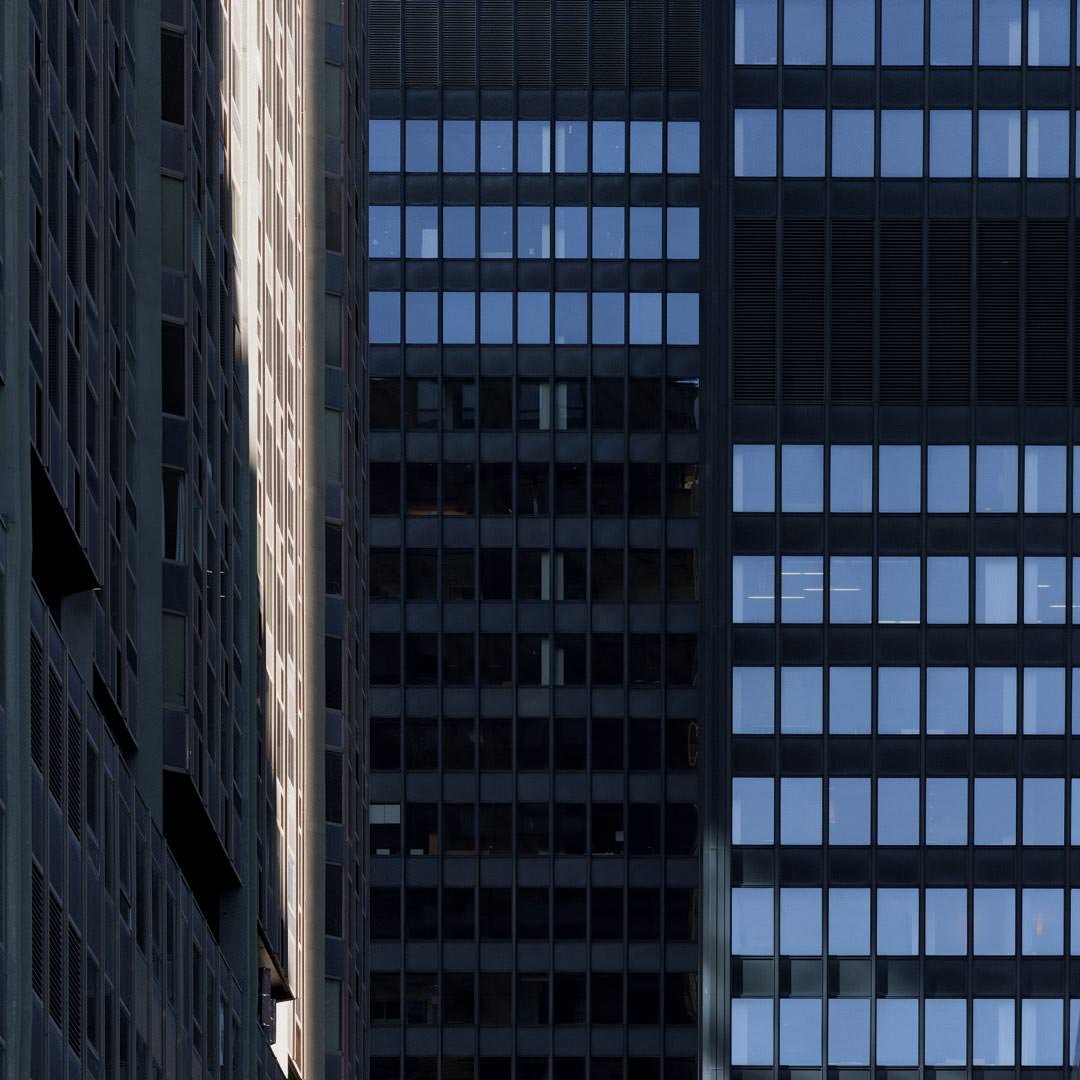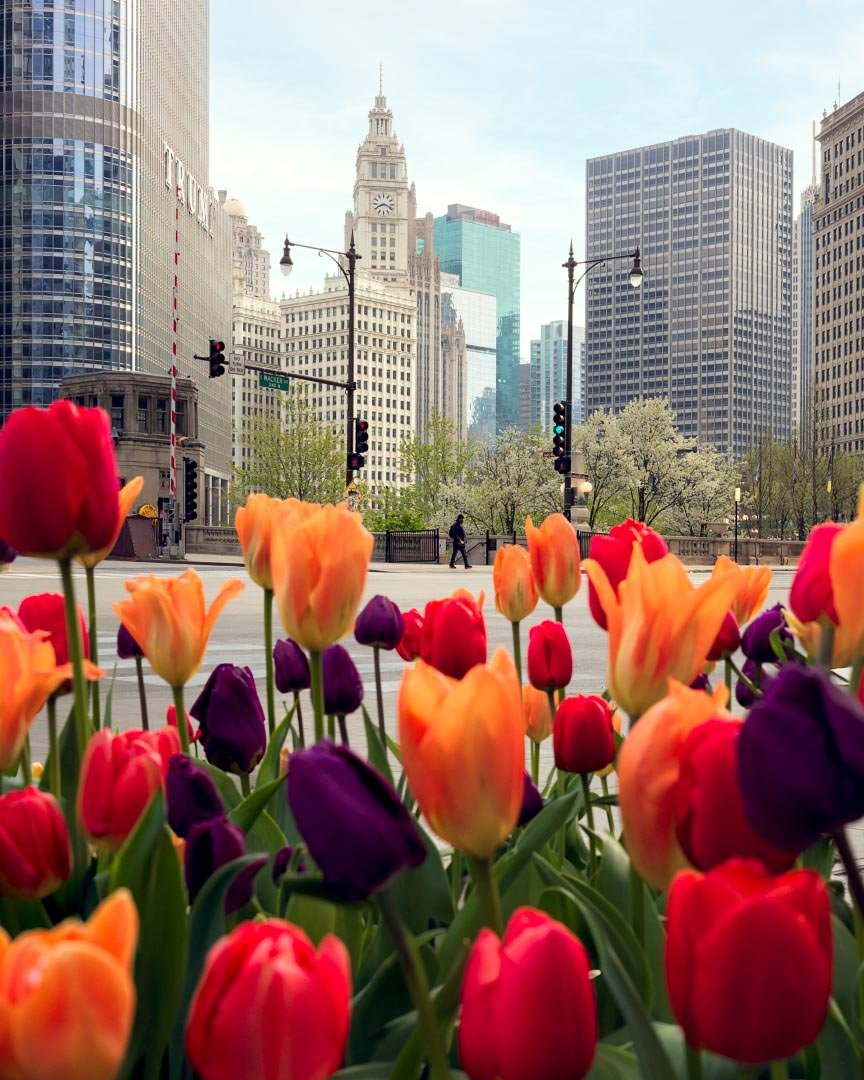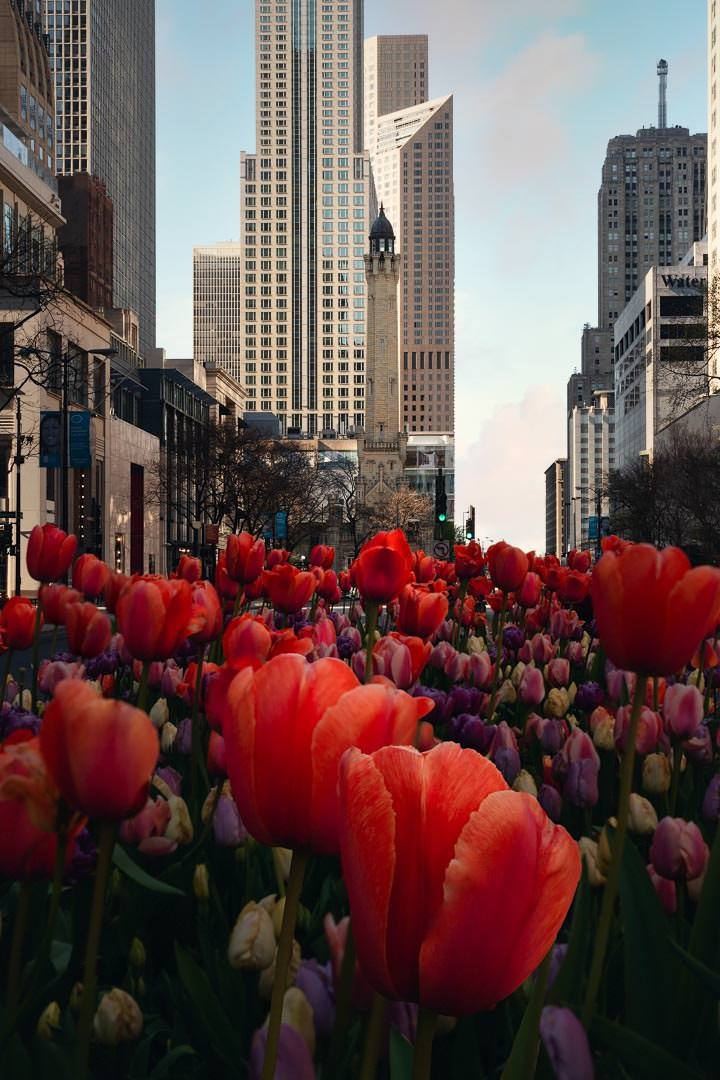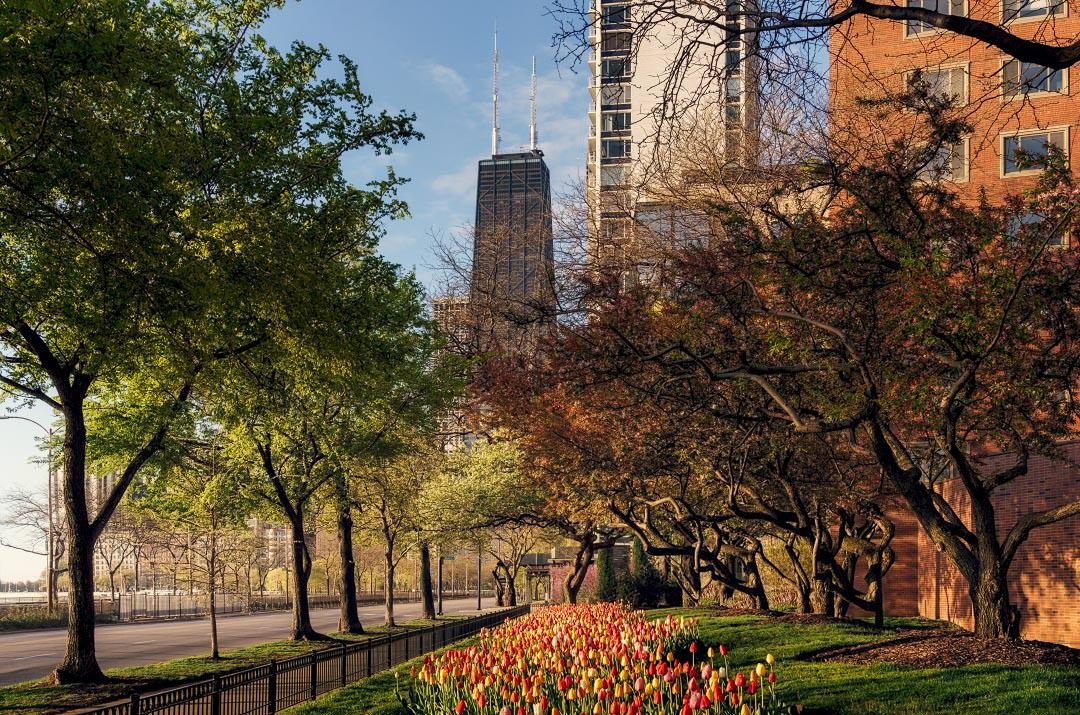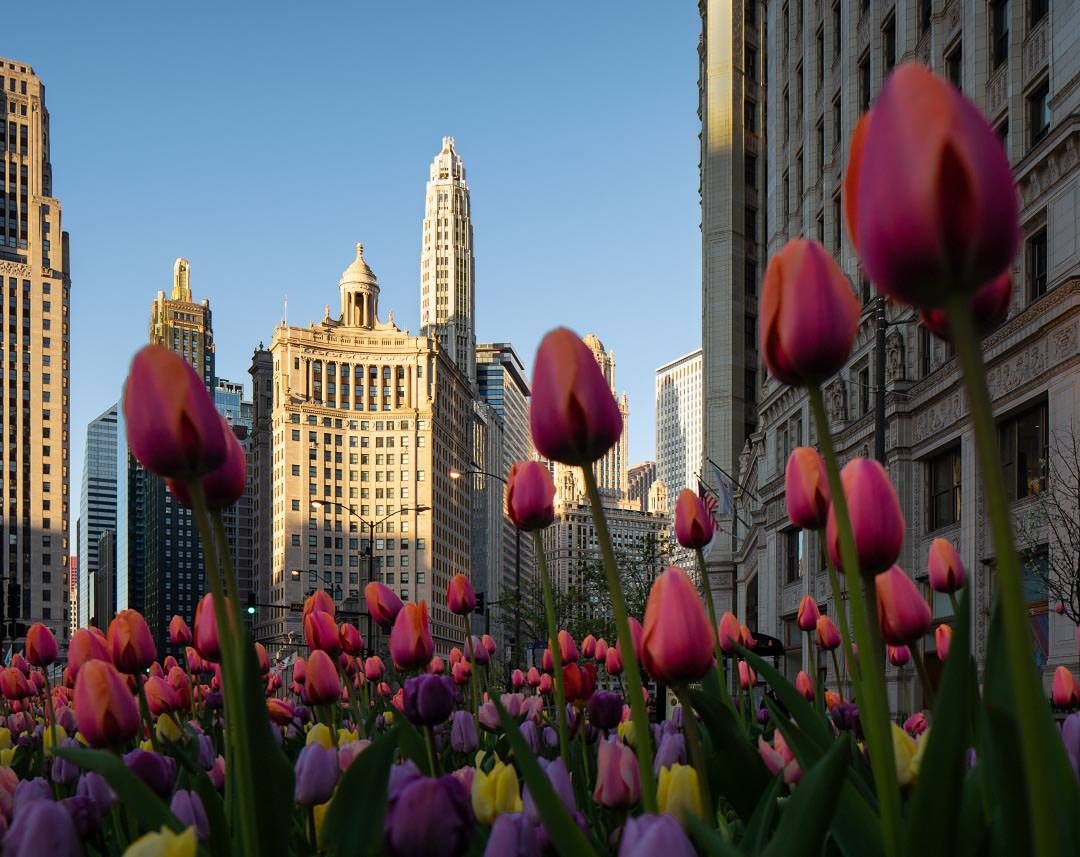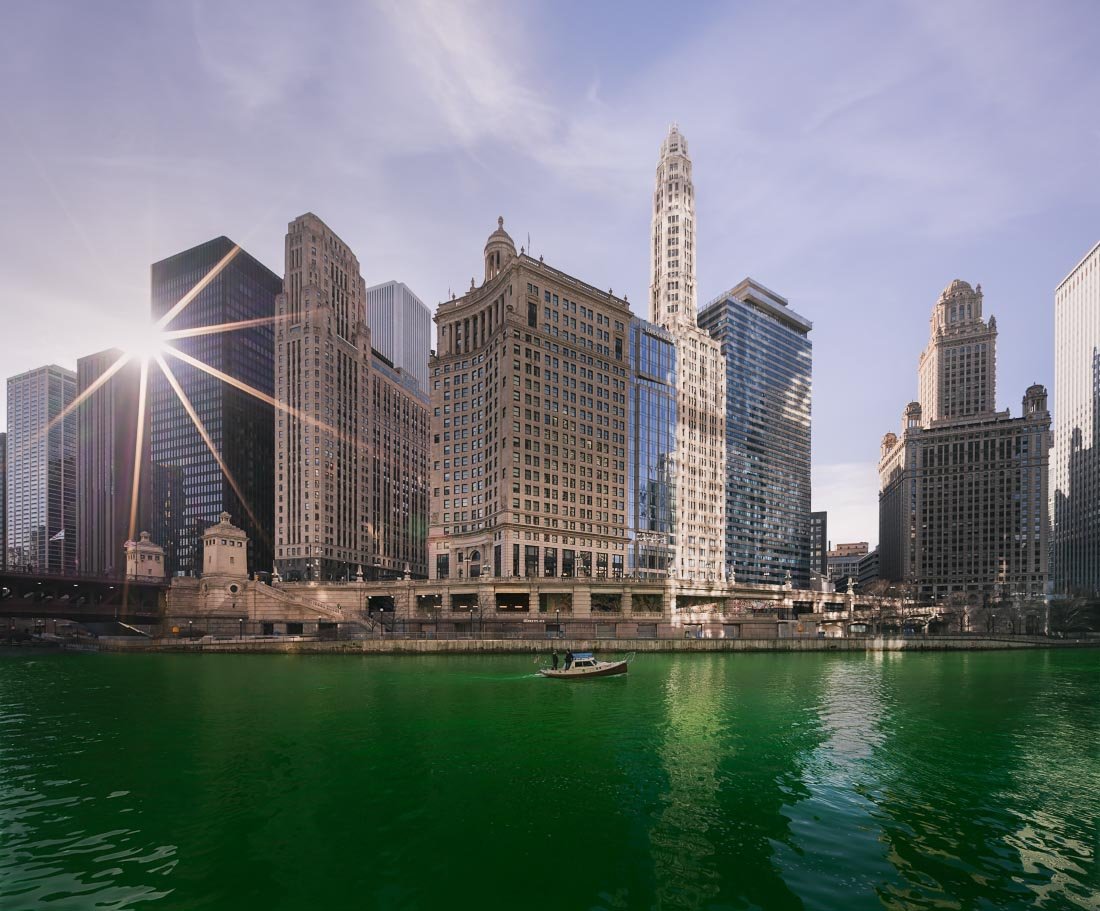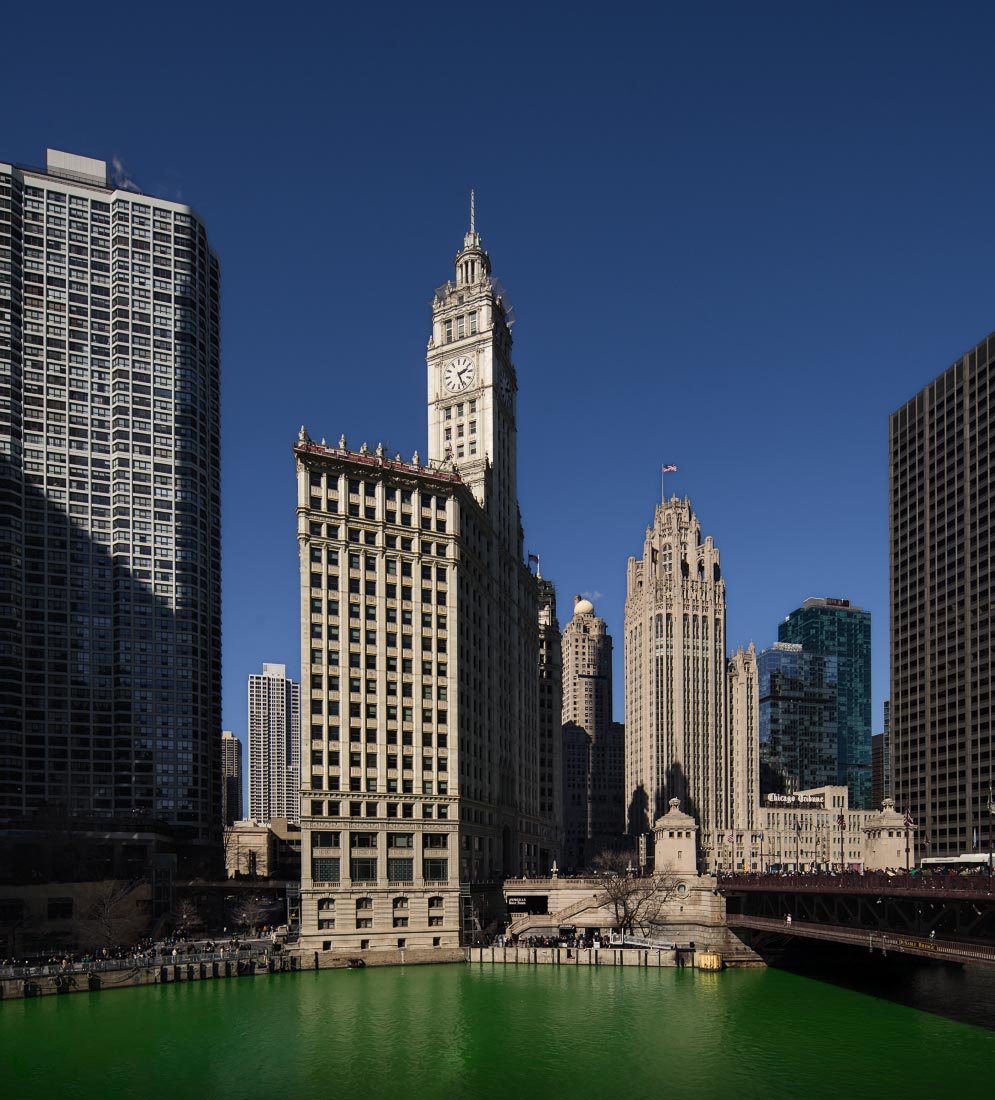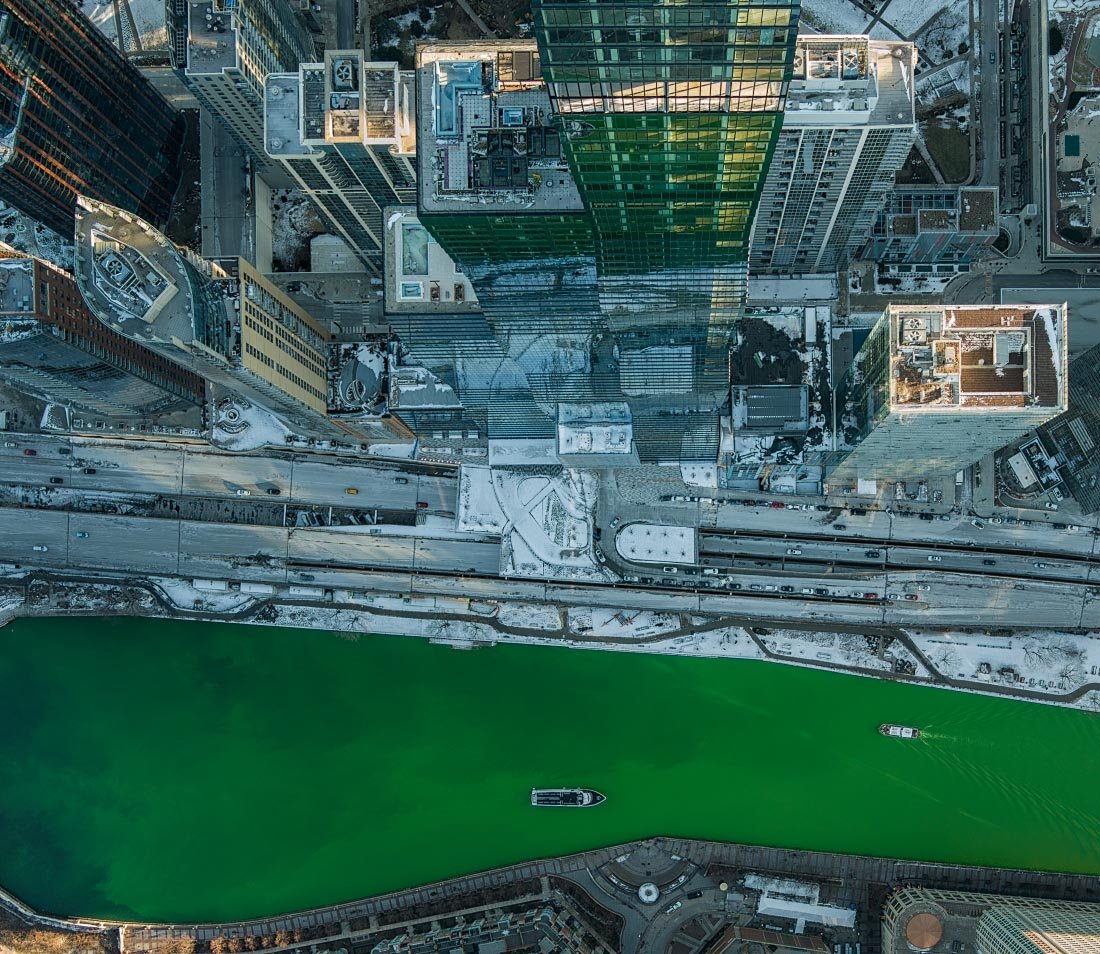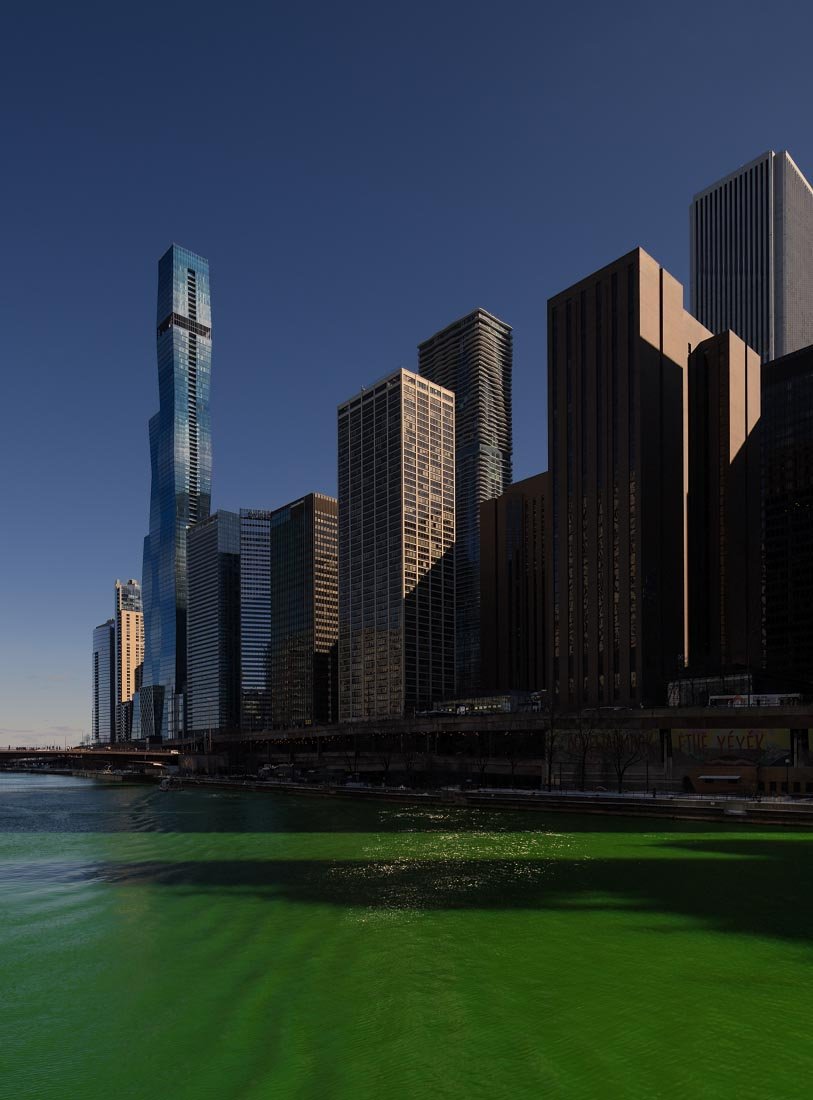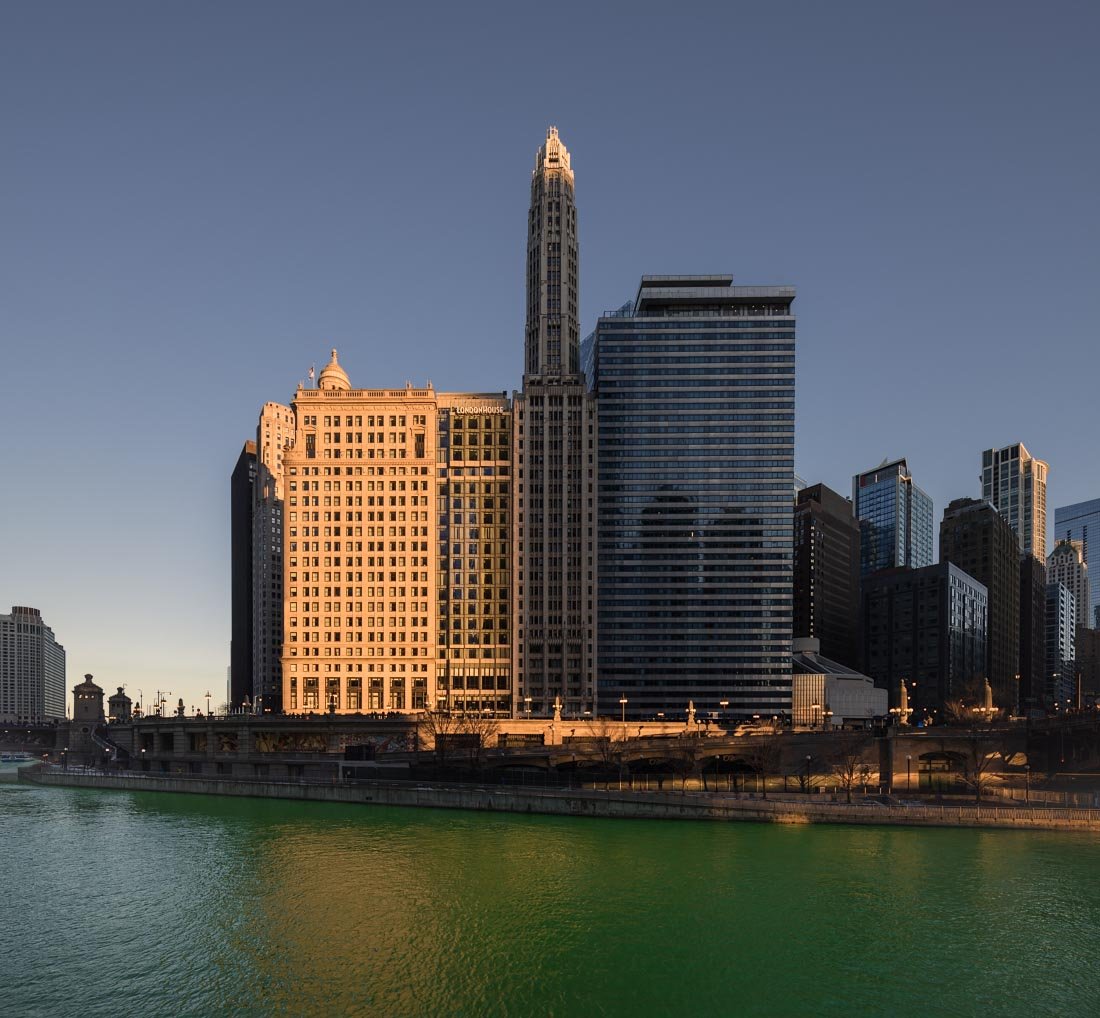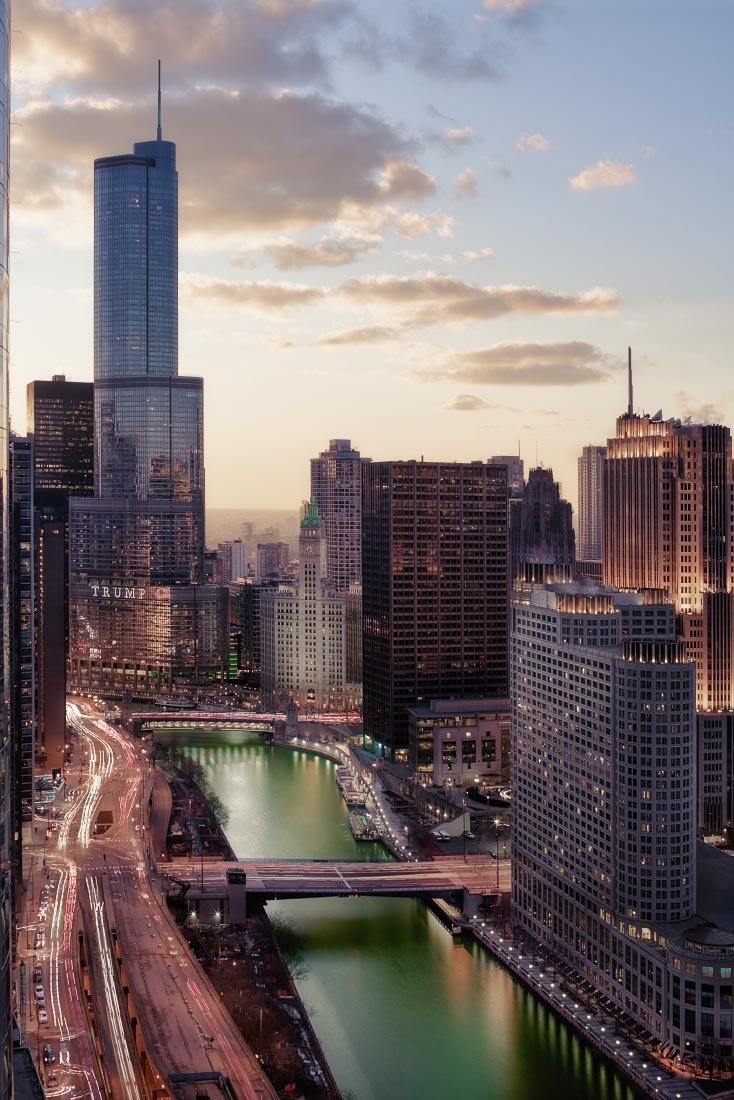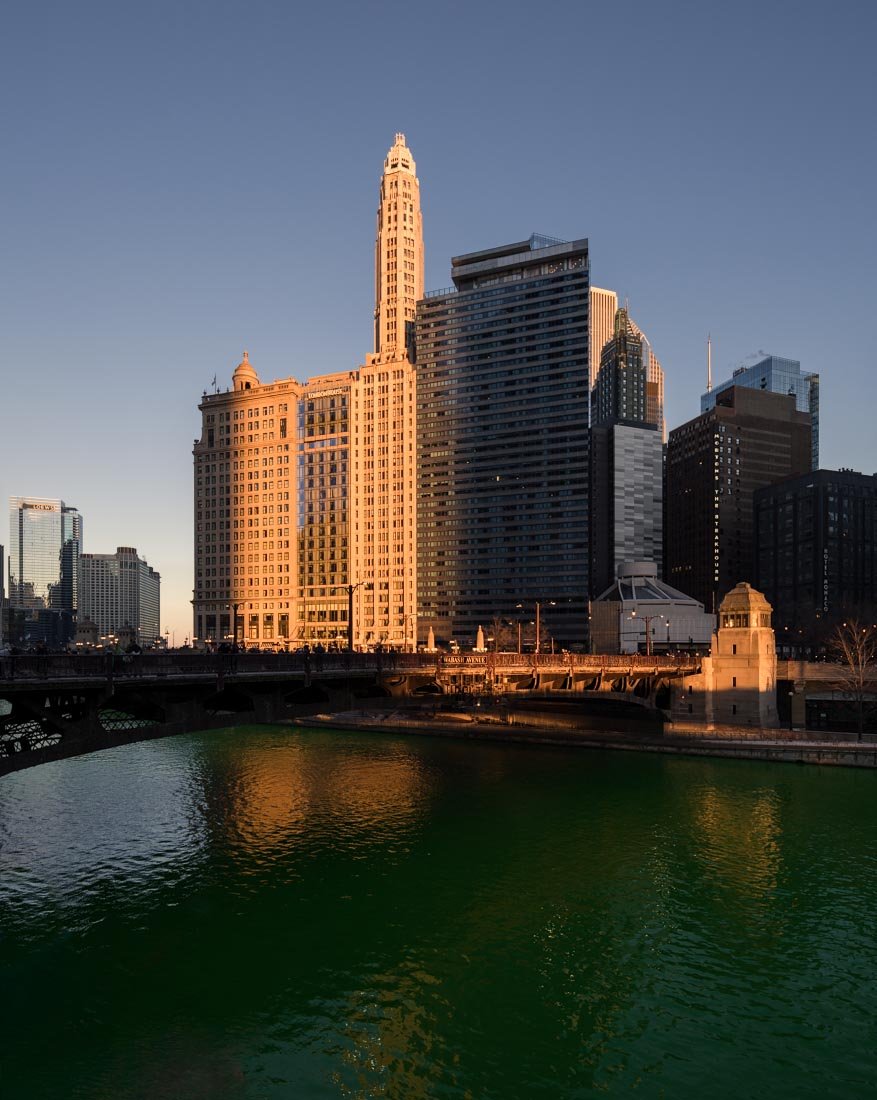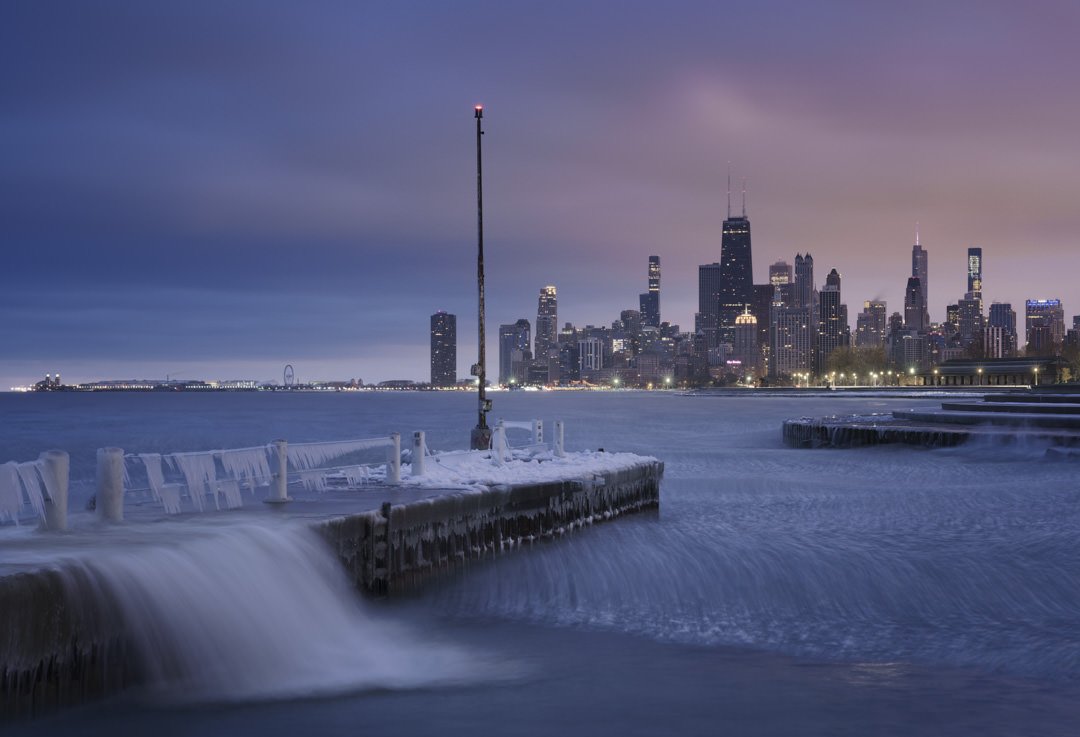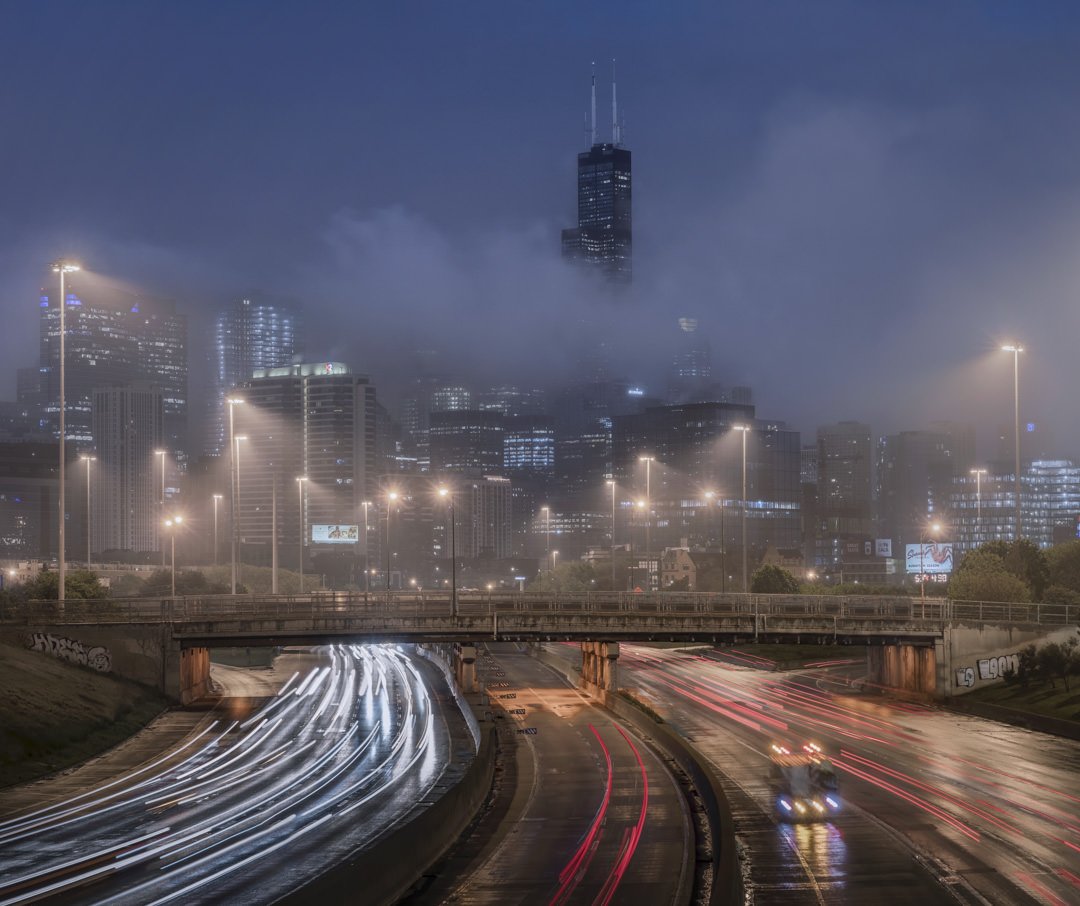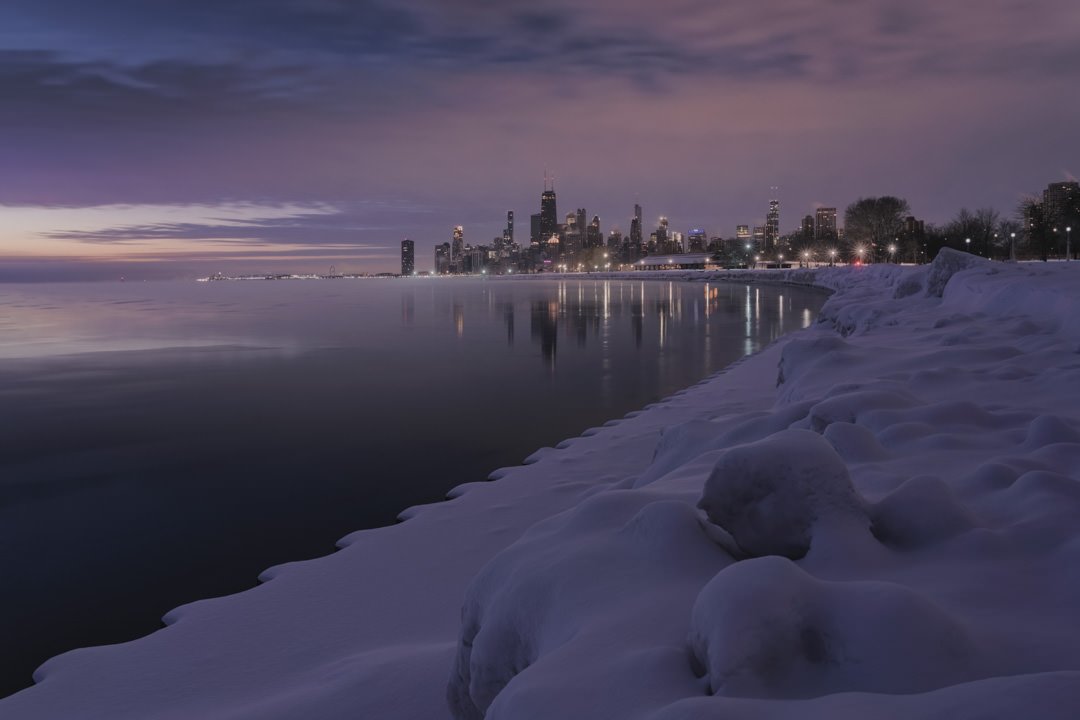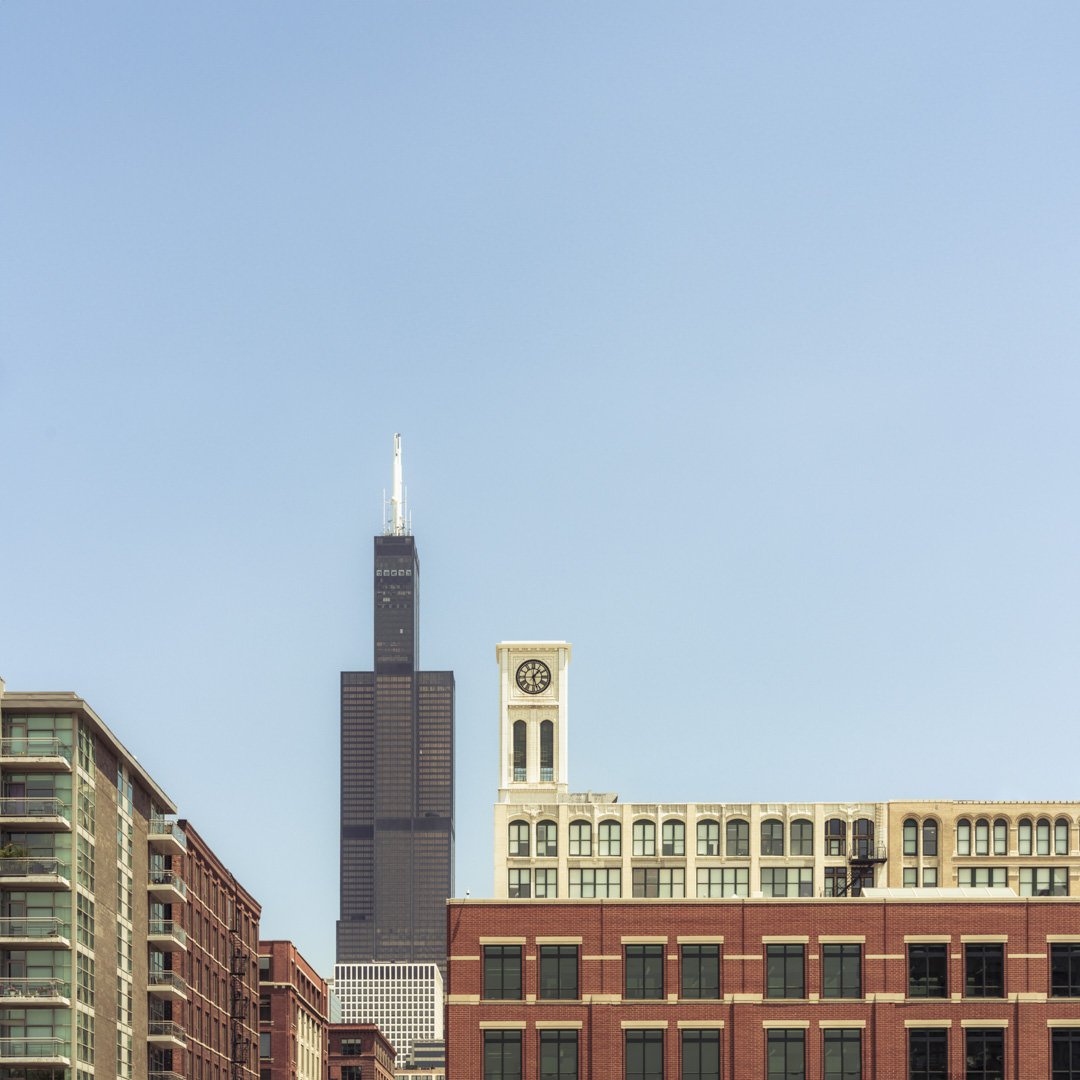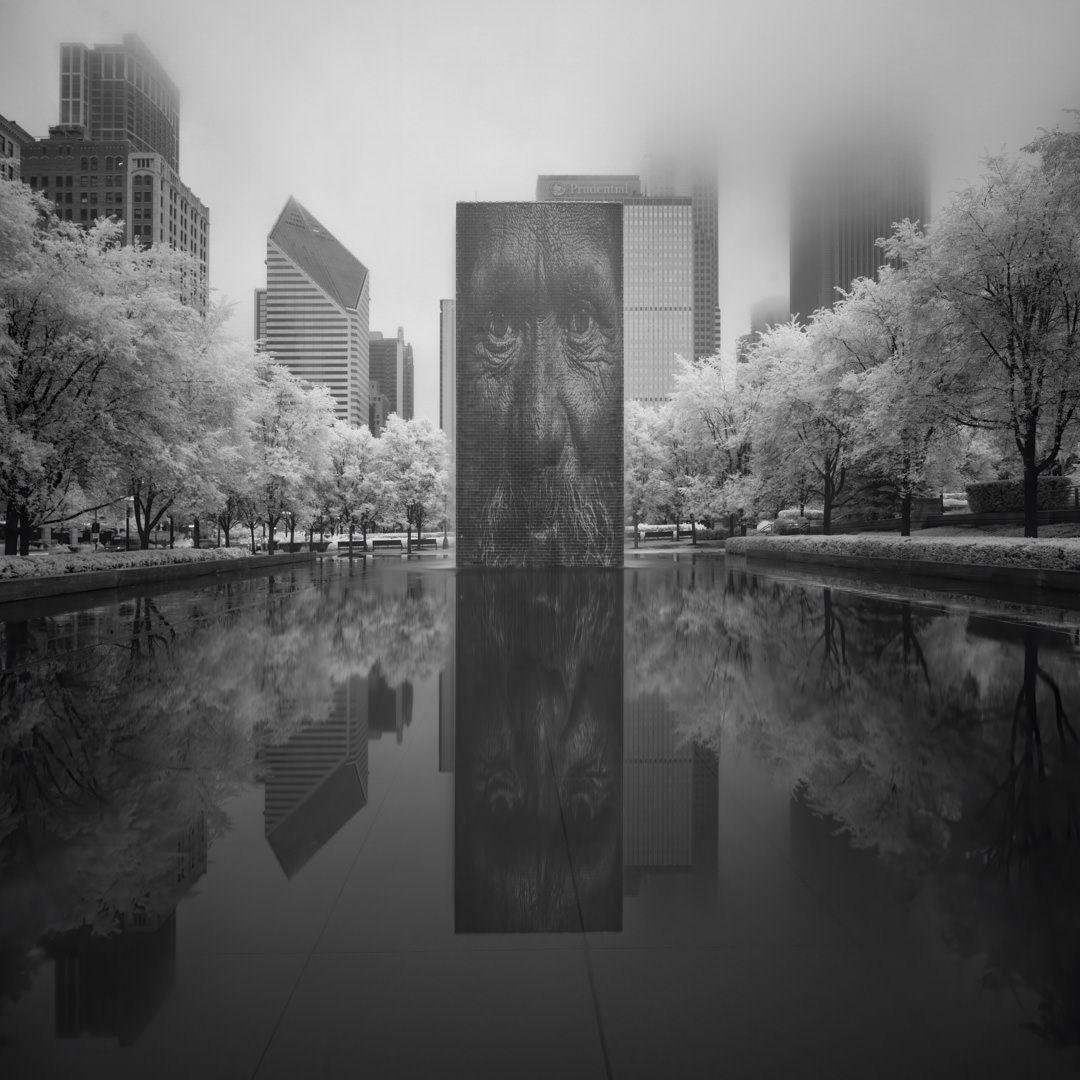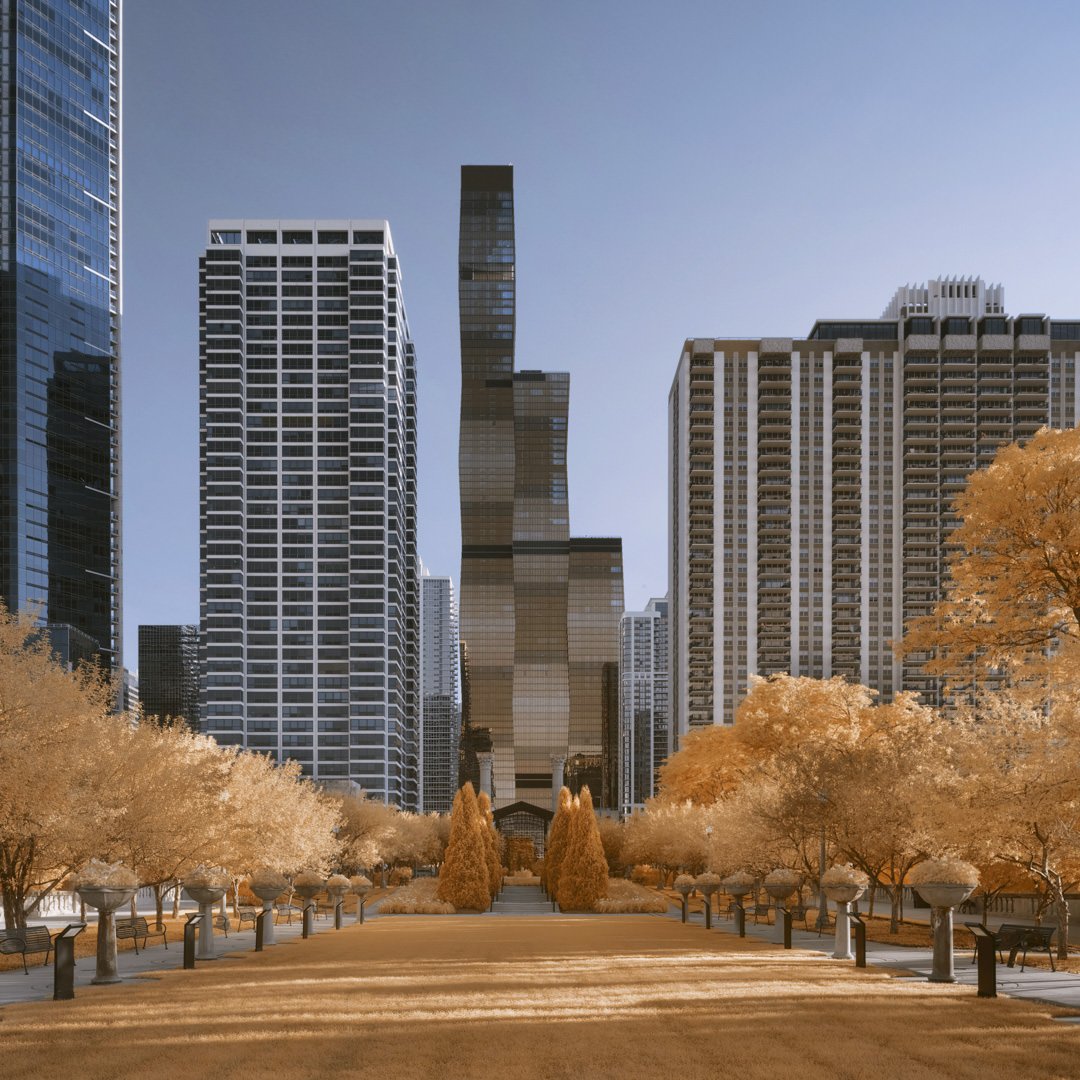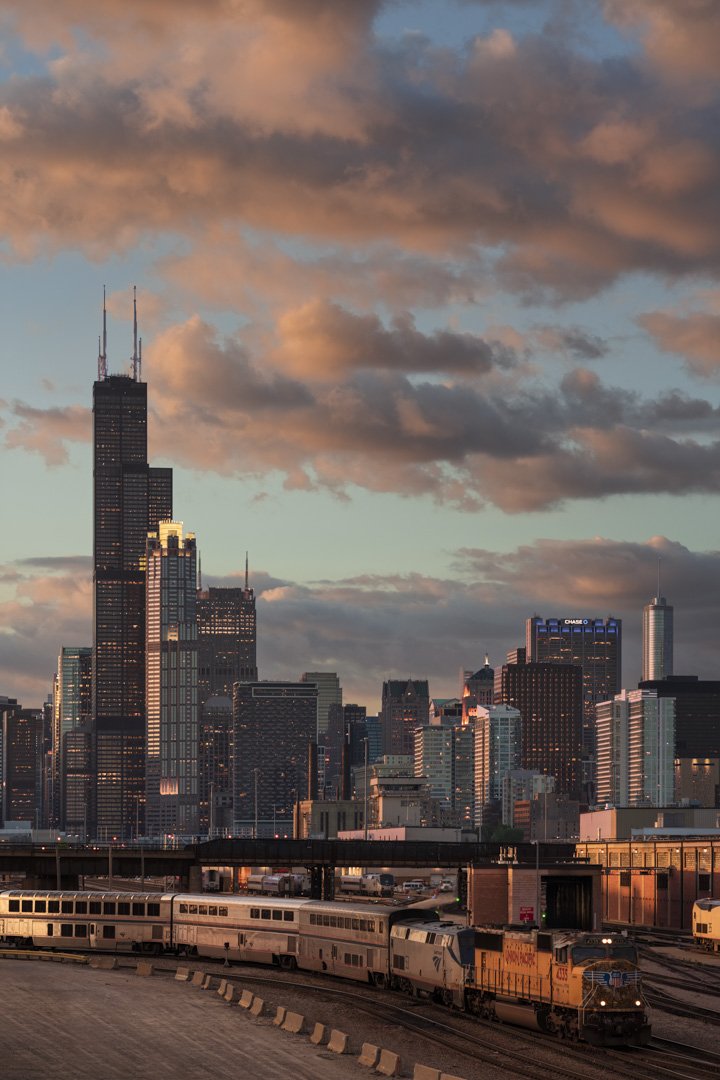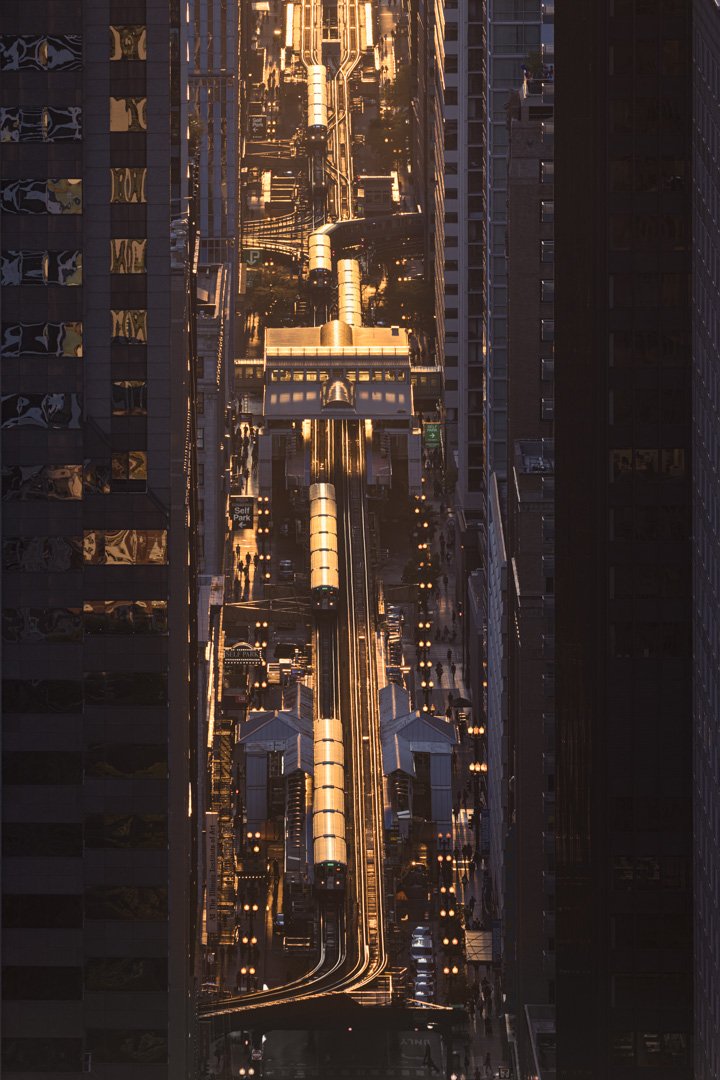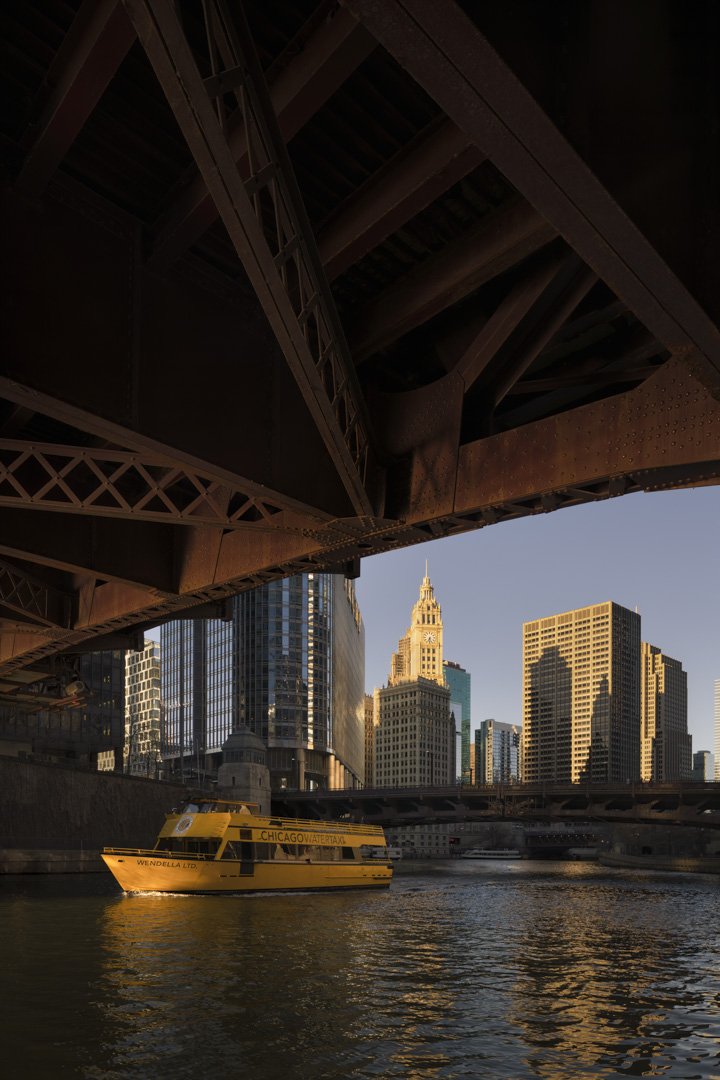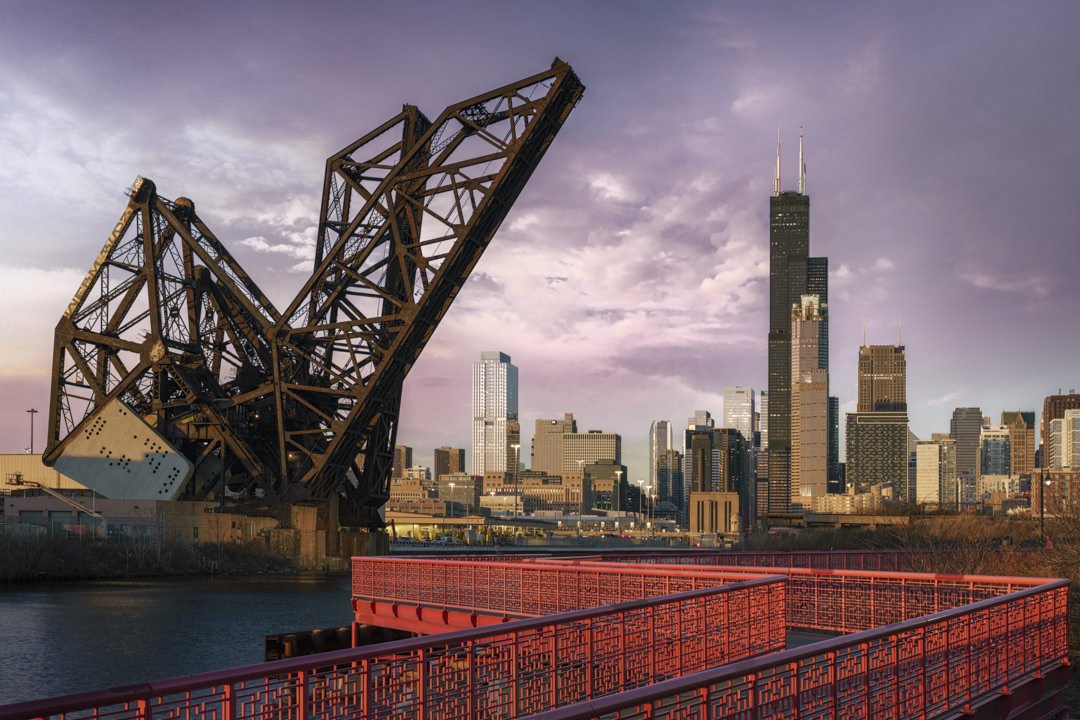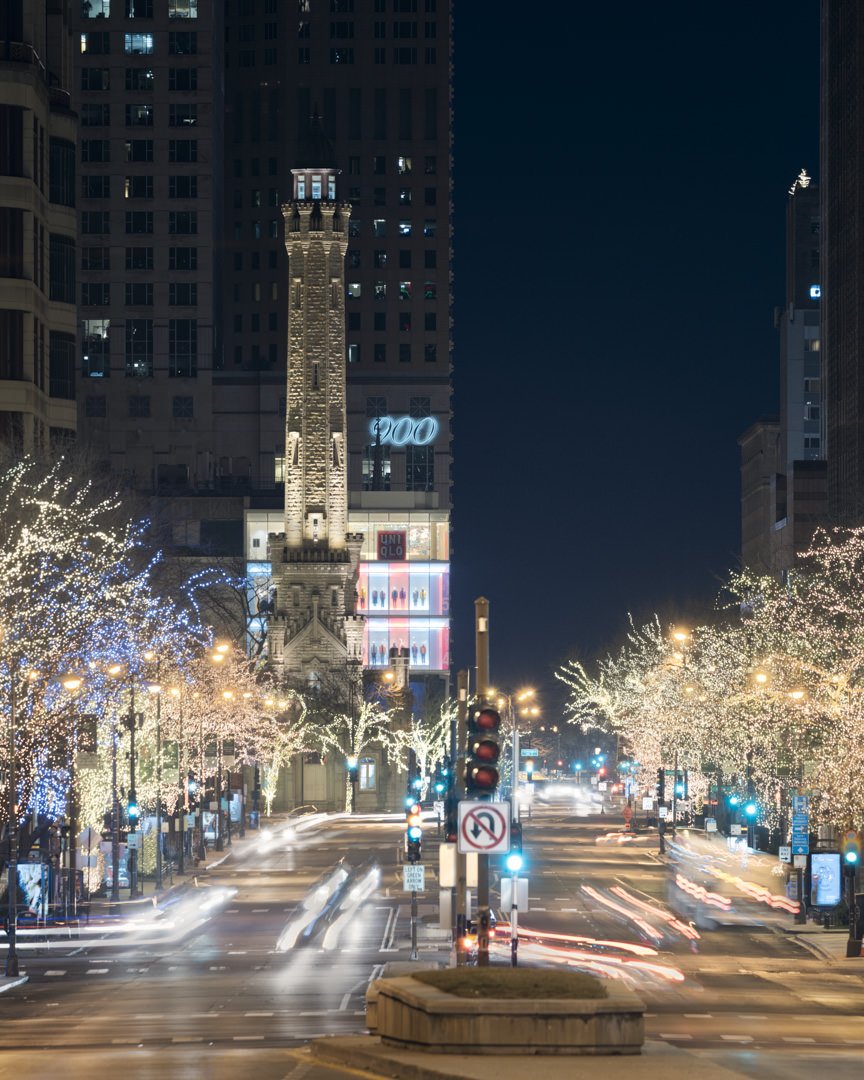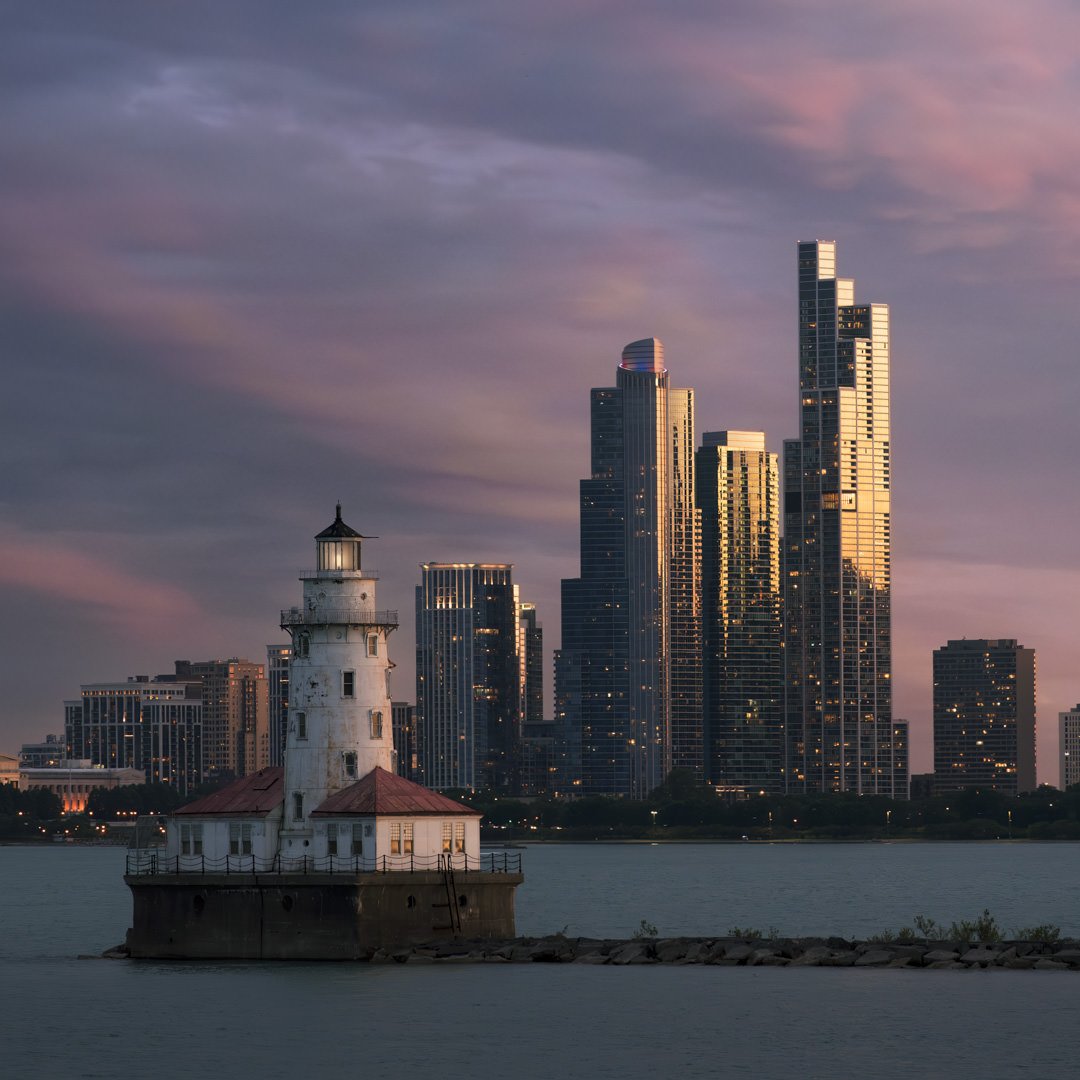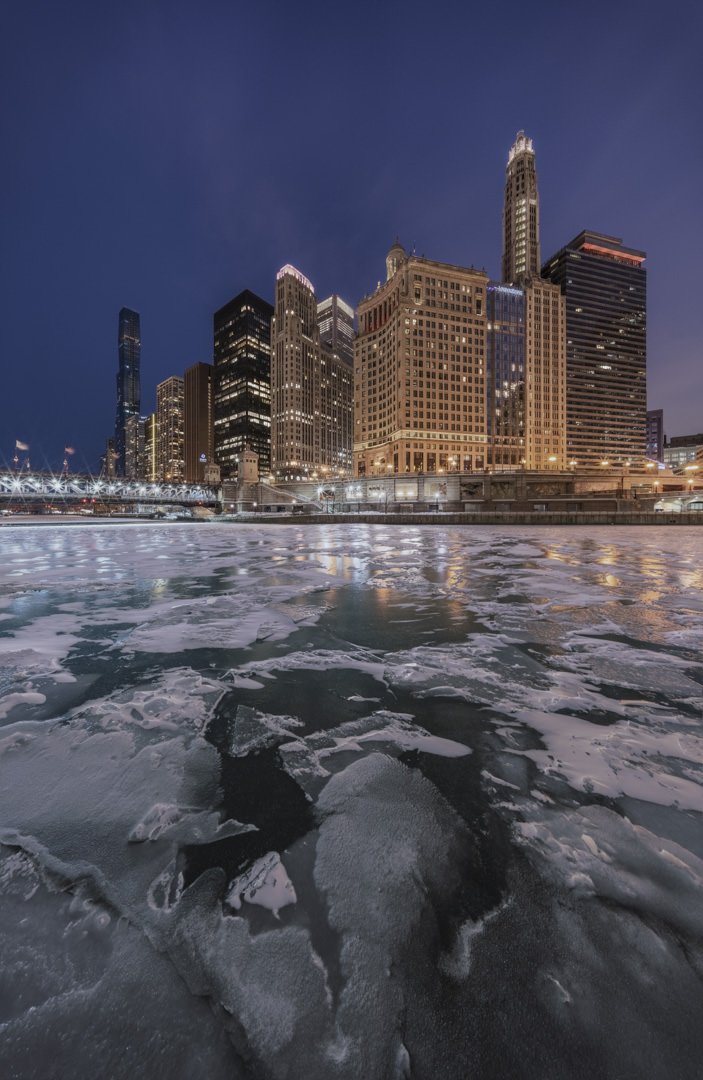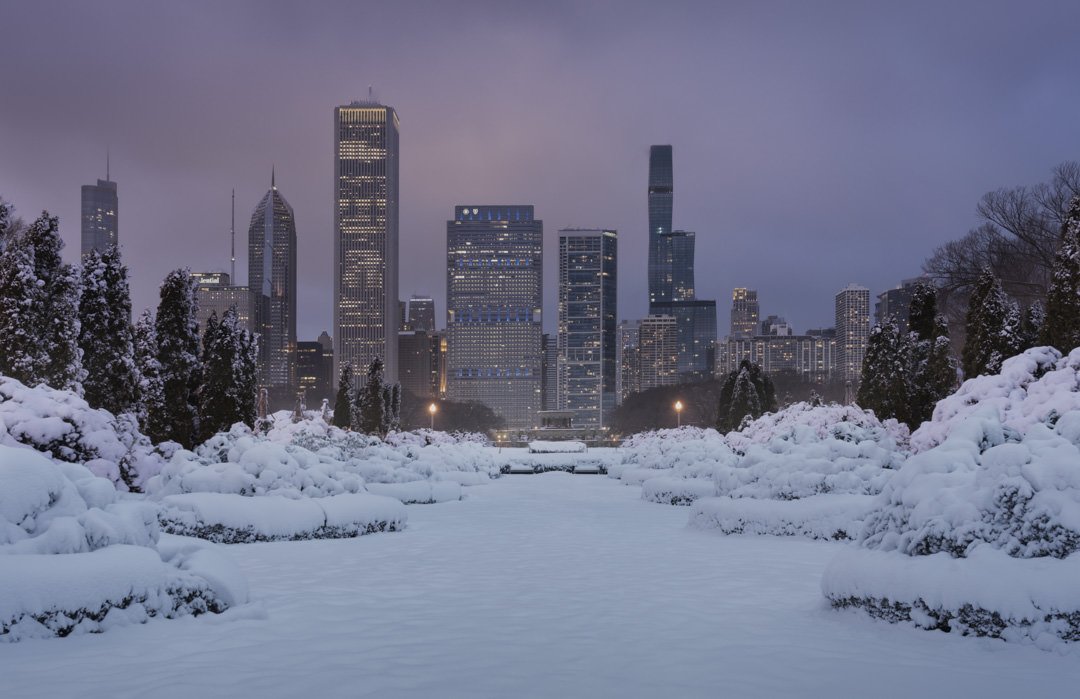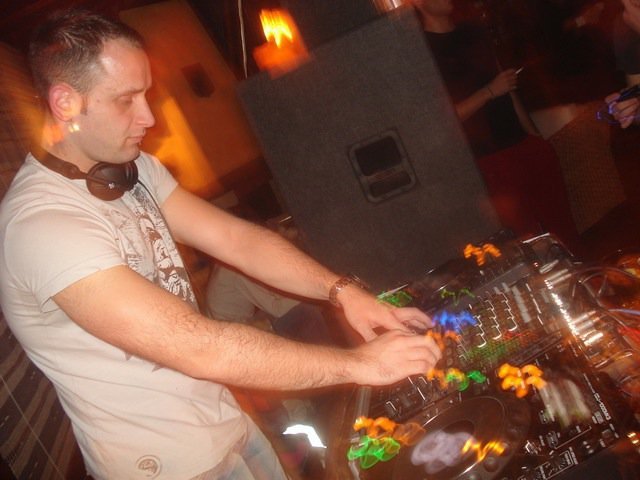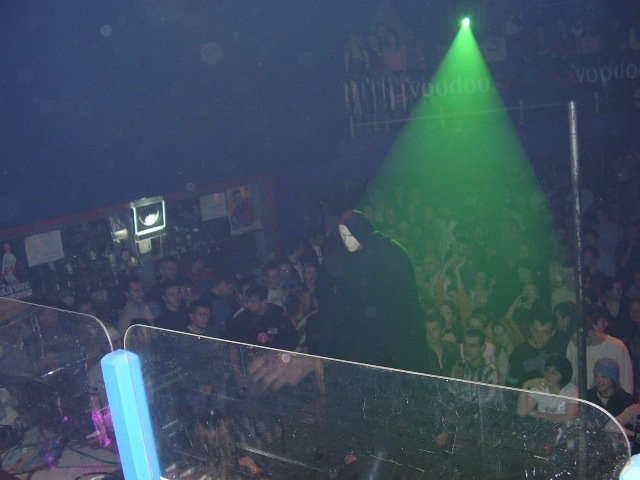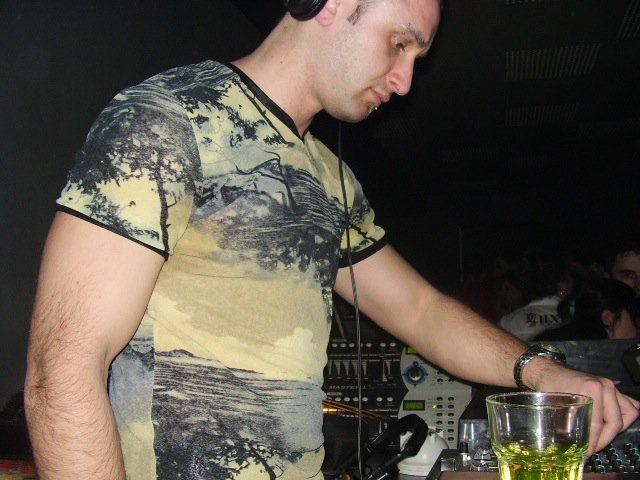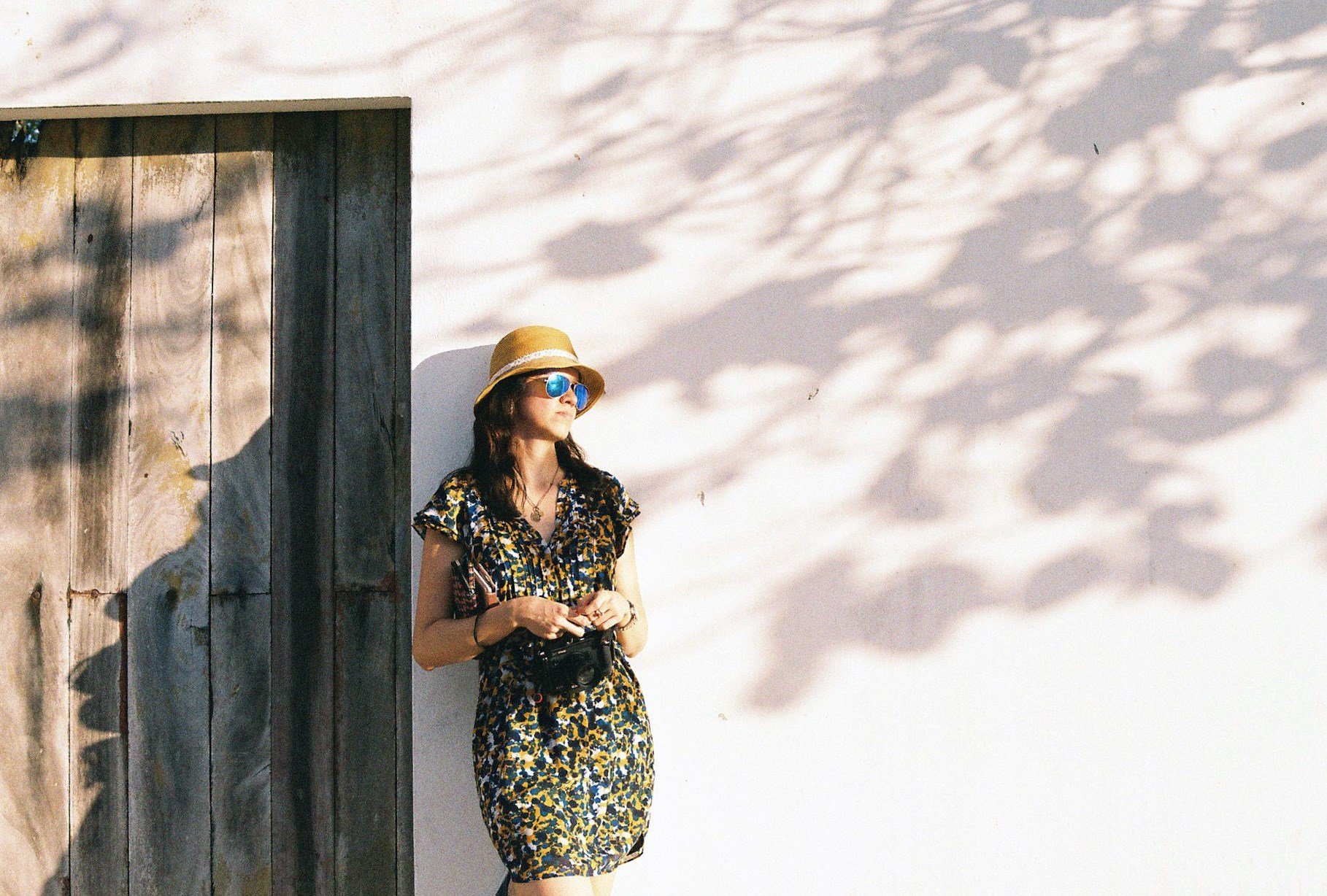Photography Tips for Elks National Veterans Memorial on Rainy Days | A Comprehensive Guide
Explore my detailed guide on how to photograph the Elks National Veterans Memorial in Chicago during rainy days. Uncover tips for using natural, soft light to enhance the historical beauty of this indoor location.
We're about to dive deep into why the Elks Memorial is a prime location for photographers, especially on days when the weather isn't playing nice. You'll get the scoop on everything from the best gear to bring along, to camera settings, and even post-processing tricks to make your photos pop. Ready to turn a rainy day into a fantastic photo-op? Let's get started!
Visiting Details
The Elks Memorial is accessible and free, which is fantastic for both amateur and professional photographers. It's open from noon to 4 PM, Monday through Saturday, between April 15 and November 15. A friendly tip: the elderly couple who greet you often have fascinating stories to share, so please don’t forget to tip them at the entrance. Engaging with them not only enriches your visit but might also give you unique insights that could add depth to your photographs. it's worth noting the distinct advantage of heading there on a rainy day. Rain tends to deter many visitors, which means you're likely to have the expansive space almost entirely to yourself. This presents a unique opportunity for us photographers.
Preparation is Key
Before venturing out to the Elks Memorial, ensuring your photography kit is fully equipped is crucial. Here’s what you should consider packing:
Wide-Angle Lens: This is a must for capturing the expansive interior spaces, allowing you to get more of the stunning architecture into each shot without needing to step back too far.
Tilt-Shift Lens: If available, a tilt-shift lens can be incredibly beneficial for architectural photography, allowing you to control perspective distortion—very handy for tall structures and interior shots.
24-105mm Lens: A versatile choice, this lens range is perfect for when you need a bit more zoom to capture details without sacrificing the quality of wide shots.
Fisheye Lens: For a more artistic take, a fisheye lens can create dramatic, sweeping images of the memorial’s interiors, offering a unique perspective that standard lenses can’t provide.
Tripod: With the low-light conditions typically found on a rainy day, a tripod will help keep your shots steady and sharp, especially when using slower shutter speeds.
Remote Shutter Release: To minimize vibrations when shooting with slow shutter speeds, a remote shutter release is essential.
General Tips for Using These Lenses in Low Light Conditions
Stabilization: Always use a tripod when possible, especially with slower shutter speeds needed in low-light conditions.
Exposure Bracketing: Consider using exposure bracketing to take multiple shots of the same scene at different exposures. This technique can be beneficial when shooting high contrast scenes like those illuminated by stained glass windows.
Focus Peaking: If your camera has it, use focus peaking to highlight areas of sharp focus, particularly useful when using manual focus lenses like the tilt-shift.
Remote Shutter Release: Minimize camera shake with a remote shutter release or your camera's timer function, especially when using slow shutter speeds.
The Ideal Settings
Adjusting your camera settings is pivotal when shooting indoors on a rainy day:
ISO Settings: Start around 200-400 to keep noise minimal while capturing as much detail as possible.
Shutter Speed: Use slower speeds to allow more light in but rely on your tripod to avoid blur.
Aperture: Use aperture creatively to control the narrative of your image. A narrower aperture (higher f-number) enhances detail and context, which is great for storytelling in architectural shots. Conversely, a wider aperture (lower f-number) can be used to isolate subjects from the background, focusing the viewer's attention on specific architectural details.
Capturing the Mood and Atmosphere
Remember, rainy days offer a unique soft light that can significantly enhance the atmosphere within the Elks Memorial. Utilize the diffused natural light coming through the windows to your advantage. It can subtly highlight the textures and colors of the interior, adding depth and emotion to your photos.
A Story in Every Corner
Each nook and cranny of the Elks Memorial holds a tale. From the grandiose sculptures to the solemn ambiance of the memorial hall, your photographs can narrate the history and reverence of the space. Focus on the elements that tell these stories—whether it’s a close-up of the intricate carvings or a wide shot of the entire interior.
Post-Processing Tips
Once you’re home, the post-processing stage is crucial in bringing out the subtle details and colors of your shots:
White Balance Adjustments: Tweak this to correct any color casts or to enhance the atmospheric conditions of your shooting day.
Play with Shadows and Highlights: Be subtle but deliberate in adjusting these to highlight the architectural details without losing the mood.
Consider Black and White: For some shots, stripping away color can intensify the dramatic effects of your rainy day photography, emphasizing texture and contrast.
Sharing Your Experience
After you’ve edited your photos, sharing them can not only showcase your skills but also provide insights to others. Whether it’s through a blog post, a social media share, or a photography forum, discuss the techniques you used, the challenges you faced, and how you adapted to the conditions. This not only helps build your profile as a photographer but also assists others in learning through your experiences.
Final Thoughts
The Elks National Veterans Memorial offers more than just a photo opportunity; it provides a rich, emotive experience, especially profound on a rainy day. With the right preparation and a keen eye for detail, you can turn what might seem like a gloomy day into a spectacular photographic expedition.
From Nature's Playground to Urban Majesty: Capturing Cityscapes with a Childlike Wonder
Explore how a photographer transforms childhood memories into stunning urban landscapes, offering a fresh perspective on city photography.
Introduction: Tucked away among hills, rivers, and lakes, my small hometown was where my journey began—a journey that has taken me from exploring natural landscapes to capturing urban ones. In this blog post, I'll share how my early adventures in nature have shaped my approach to urban photography, turning cityscapes into captivating narratives through the lens of my childhood memories.
The Seeds of Creativity: Nature as My First Playground As a child, nature was more than just a place to play; it was my first studio, my first gallery. The glistening surfaces of rock pools and the secret life beneath the woods weren't just to marvel at—they were my first subjects. These early experiences instilled in me a keen eye for detail—a vital skill for any photographer.
From Lantern to Spotlight: Developing a Dual Consciousness in Urban Photography Photography, as Alison Gopnik suggested, can be approached with what's known as 'Lantern Consciousness'—a wide, open awareness that absorbs its environment indiscriminately. This is how I capture the essence of cityscapes, taking in everything from the sweeping lines of skyscrapers to the whispered histories of narrow alleyways. Yet, 'Spotlight Consciousness'—focusing intently on a specific subject—is equally crucial. This approach helps me highlight the standout elements that tell a story all their own within the vast urban tapestry.
Expanding on Lantern and Spotlight Consciousness: Alison Gopnik's concepts beautifully illustrate the cognitive approaches that can enrich photographic practice. 'Lantern Consciousness' is like a lantern’s soft, diffuse light illuminating everything equally, enabling photographers to capture a scene in its entirety, observing subtle interactions and colors often overlooked. On the other hand, 'Spotlight Consciousness' acts like a focused beam, highlighting specific details within a scene, isolating them to emphasize their uniqueness. Balancing these approaches allows me to shift between capturing the broad, dynamic energy of a city and focusing on intimate details that draw the viewer deeper into the image.
The Art of Balancing Perspectives Mastering the balance between these perspectives is crucial. It's a skill honed over years, akin to learning how to navigate through the woods of my childhood. This balance allows me to craft images that not only depict the grandeur of the city but also its underlying stories.
Nostalgia Meets Modernity: Weaving Stories into Cityscapes The interplay between my past and present is a central theme in my work. Memories of childhood freedom and discovery often influence how I frame and perceive bustling city scenes. For example, the way light filtered through the trees back home affects how I now see light playing between skyscrapers at sunset. This personal narrative approach enriches each photograph, making it a layered story of contrasts and comparisons.
Techniques and Tips for Aspiring Urban Photographers If you’re keen to explore urban photography with a personal twist, here are some tips:
Practice Both Consciousnesses: Regularly switch between 'Lantern' and 'Spotlight' modes to enhance your flexibility and depth in photography.
Embrace Your Past: Let your personal history color your photographic perspective. This might mean seeing the urban through the lens of your rural or suburban memories.
Focus on Details: Look for the stories hidden in small details—these often hold the essence of the city.
Keep Learning: Photography is a continuous journey of discovery. Remain open to new ideas and techniques that can enrich your photographic voice.
Conclusion: My journey from the wilderness of my childhood to the structured chaos of urban landscapes is not just about changing scenery but evolving perspectives. Urban photography, influenced by the memories of lantern-lit woods and spotlight-focused details, offers a narrative that resonates deeply with those who view my work. By integrating the whimsy of past explorations into the reality of the present, I capture more than just scenes; I capture stories that bridge worlds.
Engage with Me: I hope this look into how childhood experiences can illuminate urban photography resonates with you. Feel free to share your thoughts or stories with me. If you found this perspective insightful, please share it with others. Keep following for more stories and tips on capturing life through a lens.
Thank you for joining me in this reflective exploration, where each photograph is not just a view of the city but a part of a personal story.
Capturing Spring's Elegance: Tulip Photography Tips in Chicago
Spring in Chicago is a canvas of colors, with tulips taking center stage. Explore the prime locations and insider tips to capture breathtaking tulip photography in the city's heart.
Spring in Chicago is a sight to behold, especially for photography enthusiasts. The city transforms into a vivid tapestry of colors, with tulips blooming in every corner, from the bustling Magnificent Mile to the tranquil pathways of local neighborhoods. This guide will lead you through the prime spots for tulip photography in Chicago, paired with expert tips to elevate your photos from simple snapshots to mesmerizing stories of spring.
Prime Locations for Tulip Photography
Bright yellow and white tulips frame the lively Chicago Theatre marquee that reads "We Love Chicago," set against the city's skyline. This image captures the essence of Chicago in spring, where the charm of nature meets the city's energy.
Magnificent Mile on Michigan Avenue: Amidst the hustle of shoppers, a ribbon of tulips adds a calming natural element. The interplay between blooming flowers and towering buildings offers a dynamic photographic canvas.
Millennium Park: This is the place where tulips meet art, presenting opportunities to play with composition, framing tulips against Chicago's famed public art for a cultural twist in your photos.
Chicago Riverwalk: Follow the river's flow and find tulips adding pops of color along the serene walkways, reflecting the urban skyline in the tranquil water – perfect for photographers seeking a peaceful juxtaposition.
Residential Gardens in Local Neighborhoods: These hidden gems provide a more personal and tranquil perspective of tulip beauty, away from the city's roar.
Gold Coast Neighborhood: As a bonus tip, don't miss the elegant Gold Coast area where tulips line the posh streets, adding a touch of organic beauty to the upscale ambiance.
Expert Tips for Tulip Photography in Chicago
Golden Hours: Aim for the golden hours when soft light bathes the city in a warm glow, perfect for highlighting the tulips' vibrant hues and gentle textures.
Overcast Illumination: Cloudy skies can be your ally, offering diffused light that evenly illuminates the blooms and reduces shadows.
Varied Angles: Experiment with angles – a worm's eye view can give tulips a grand presence against Chicago's skyscrapers, while a bird's-eye view can showcase the pattern and flow of tulip arrangements.
Micro Beauty: Isolate a single tulip to focus on the delicate patterns and droplets of morning dew, telling a story in each petal.
Enhancing Your Tulip Photography with Reflected Light
City Reflections: Urban environments are a treasure trove for photographers, especially with the interplay of light. Keep an eye out for reflected light off Chicago's glass and steel facades. These reflections can spotlight tulips in unexpected places, creating a natural studio light effect that brings out the texture and color of the petals in a unique way.
Isolated Illumination: Use the reflected light to isolate clusters or even single tulips. This technique allows you to darken the background while the subject stays illuminated, making the tulips visually 'pop' and drawing the viewer’s eye straight to the subject.
Golden Surfaces: During the golden hours, the light reflected from buildings is particularly warm. Positioning yourself to capture this light can add a magical glow to your tulip scenes, enriching your image with a sense of warmth and depth.
Incorporating these tips into your tulip photography adventure in Chicago will help you create captivating images that not only depict the beauty of the flowers but also tell the rich story of their urban coexistence. Keep your lens ready, and let the city's natural and reflected lights guide you to the perfect shot.
Capturing the Green: St. Patrick's Day Photography in Chicago.
Dive into the heart of Chicago's St. Patrick's Day with my essential photography guide. Capture the green river, architectural wonders, and the spirit of celebration like never before.
As the frost of winter starts to melt away, Chicago bursts into a sea of green, heralding the arrival of St. Patrick's Day. This isn't just any celebration; it's a visual feast, especially for photographers. The dyeing of the Chicago River, a tradition since 1962, offers a rare spectacle: a vibrant emerald river snaking through a bustling metropolis. But it's not just about the river. The architecture, the people, and the spirit of festivity provide endless opportunities for captivating photography. This guide is your compass to navigating this lively event, ensuring you capture the essence of St. Patrick's Day in Chicago through your lens. From the perfect spots to snap the green river to tips on making the most of the festive ambiance, I've got you covered. Ready to dive into this photographic adventure?
Location Tips for Capturing the Green River
Michigan Avenue Bridge: For a classic shot of the river, position yourself on or near the Michigan Avenue Bridge. The elevation provides a panoramic view that beautifully frames the river with the city's skyscrapers. Early morning light can add a soft glow to your shots.
Riverwalk: For up-close views of the green river, the Chicago Riverwalk offers several vantage points. Its proximity allows for detailed shots of the water's color and the reflections of surrounding buildings. Look for unique angles and reflections for a creative take.
From a Boat: If you're looking for a dynamic perspective, consider taking a boat tour. Being on the river itself gives you an unparalleled viewpoint and the chance to capture the vibrant hues of green from within.
Photography Tips for St. Patrick's Day
Early Arrival: To secure the best spots, especially at popular locations like the Michigan Avenue Bridge, arrive early. The crowds can get dense, and a good position means better shots.
Use a Polarizing Filter: The midday sun can create glare on the water, especially with the bright green dye. A polarizing filter will help manage reflections and enhance the river's color.
Play with Shutter Speed: If you're capturing the boat parade or the dyeing process, playing with your shutter speed can yield interesting results. Fast speeds will freeze the action, while slower speeds can create a silky effect on the water.
Capture the Crowd: Don't just focus on the river. The people around you, decked out in green and celebrating, add a vibrant layer of life to your photos. Candid shots of families, friends, and revelers encapsulate the day's joyful atmosphere.
A Post-Celebration Tip
Remember, the river stays green long after the festivities have concluded, and the crowds have dispersed. The day after St. Patrick's Day, especially during the early morning or late evening, offers a serene yet still vividly green river scene. The softer light during these times can enhance the emerald hues, allowing for stunning, crowd-free photographs.
St. Patrick's Day in Chicago is more than a celebration; it's an experience, one that's visually rich and deeply ingrained in the city's cultural fabric. Armed with these tips and locations, you're set to capture the essence of this unique event, from the jubilant crowds and the architectural backdrop to the surreal beauty of a green river winding through the heart of Chicago. Happy shooting!
A Day in the Life of a Chicago Photographer
Dive into the daily adventure of a Chicago photographer as they chase the city's light from dawn till dusk, capturing its stunning landscapes and urban beauty.
Ever wondered what it's like to capture the soul of a city through the lens of a camera? Imagine waking up in Chicago, a city teeming with architectural marvels, vibrant street life, and endless opportunities for creative exploration. For a photographer, each day in Chicago is a new adventure, a chance to tell the city's story through their eyes. From the serene moments of the morning's golden hour to the dynamic energy of nighttime cityscapes, this blog post takes you on a journey through a day in the life of a Chicago photographer. Get ready to see Chicago in a light you've never seen before, guided by the lens of a local photographer passionate about capturing the city's essence.
Morning: Chasing the Golden Hour
My day begins in the quiet before the city stirs, chasing the golden hour's soft, ethereal light. With camera in hand, I venture out to locations where the dawn's first rays transform the ordinary into the spectacular. From the serene lakefront to the Loop's architectural marvels, I capture Chicago awakening in glorious color.
Midday: Abstracts, Details, and Infrared Explorations
As the sun reaches its zenith, I dive into the world of abstracts and intricate details. This is when Chicago reveals its hidden artistry in the form of patterns, light reflections, and textures. My focus shifts to capturing the subtle interplay of light and shadow on the urban landscape, finding beauty in the mundane.
It's also the perfect time for infrared photography, which offers a surreal perspective on familiar scenes. Armed with an infrared filter, I transform the midday landscape into something otherworldly. The green foliage of city parks turns into ethereal white, and the sky takes on a dramatic, dark hue, unveiling a Chicago that's invisible to the naked eye. This blend of abstract, detail-focused imagery and infrared shots creates a portfolio that's as diverse as it is captivating.
Afternoon: Golden Hour Part Two
The day's second golden hour calls for a shift back to the grand vistas. I position myself where the city skyline meets the setting sun, capturing the silhouettes of skyscrapers against the fiery backdrop. This is a dance of timing and luck, waiting for that perfect moment when the city bathes in golden light.
Evening: The Blue Hour and Nighttime Cityscapes
As night descends, the cityscape undergoes another transformation. The blue hour wraps Chicago in a cool, mystical glow, perfect for capturing its illuminated beauty. I explore the vibrancy of night, from the glowing marquee of the Chicago Theatre to the bustling energy of Michigan Avenue, using long exposures to paint with light.
Wrapping Up: Reflection and Planning
Returning home, I review the day's captures, from dawn's first light to the nocturnal beauty of the city. This quiet reflection helps me appreciate the day's work and plan future explorations. Each photograph is a reminder of Chicago's endless inspiration, urging me to keep exploring and capturing its multifaceted charm.
In this city of constant movement and contrast, photography is my way of connecting with the world, capturing its myriad stories one frame at a time. From the golden light of dawn to the infrared mysteries of midday and the captivating night, each day is a new chapter in my photographic journey.
From Beats to Clicks: My Unexpected Journey from DJ to Photographer
Join us on a captivating journey from the DJ booths to the photographic landscapes of Chicago, where photography and creativity find a new beat.
My journey from the DJ booths took an unexpected turn when I landed in Pennsylvania. It was here, amidst its serene landscapes, that I not only found a pause from the beats and rhythms of nightlife but also met my future wife. She shared my newfound curiosity for photography, a hobby we both stumbled upon as we looked for creative outlets beyond our usual routines.
Moving to Chicago together marked the next chapter of our adventure. This bustling city, with its towering skyline and vibrant streets, was a stark contrast to the quiet of Pennsylvania. But it was in this dynamic setting where our shared passion for photography truly took off. Chicago offered us an endless canvas to explore and capture together—from the serene mornings by Lake Michigan to the lively pulse of downtown at night.
Transitioning from life as a DJ to becoming a photographer felt like remixing my own story, but now I had a partner in crime. We swapped late-night gigs for photo walks, mixing tracks for capturing moments. The city, with its distinct seasons and colorful character, became the backdrop to our combined creativity. Each photograph we took was a piece of our shared journey, a silent melody of our lives intertwining.
Harmony between urban life and personal milestones.
So, while I may have left Europe and the DJ scene behind, moving to Chicago with my wife opened up a new realm of possibilities. Photography didn't just become our joint passion; it was a way for us to build our life together, capturing the world through our lenses. Every snapshot is a reminder of how far we've come, from our serendipitous meeting in Pennsylvania to making a home together in the Windy City, all while pursuing the art that brought us closer.



